文章
ritau
2020年05月17日

Asparagus, or garden asparagus, folk name sparrow grass, scientific name Asparagus officinalis, is a perennial flowering plant species in the genus Asparagus. Its young shoots are used as a spring vegetable.
It was once classified in the lily family, like the related Allium species, onions and garlic. However, genetic research places lilies, Allium, and asparagus in three separate families—the Liliaceae, Amaryllidaceae, and Asparagaceae, respectively—with the Amaryllidaceae and Asparagaceae being grouped together in the order Asparagales. Sources differ as to the native range of Asparagus officinalis, but generally include most of Europe and western temperate Asia. It is widely cultivated as a vegetable crop.
Only young asparagus shoots are commonly eaten: once the buds start to open ("ferning out"), the shoots quickly turn woody.
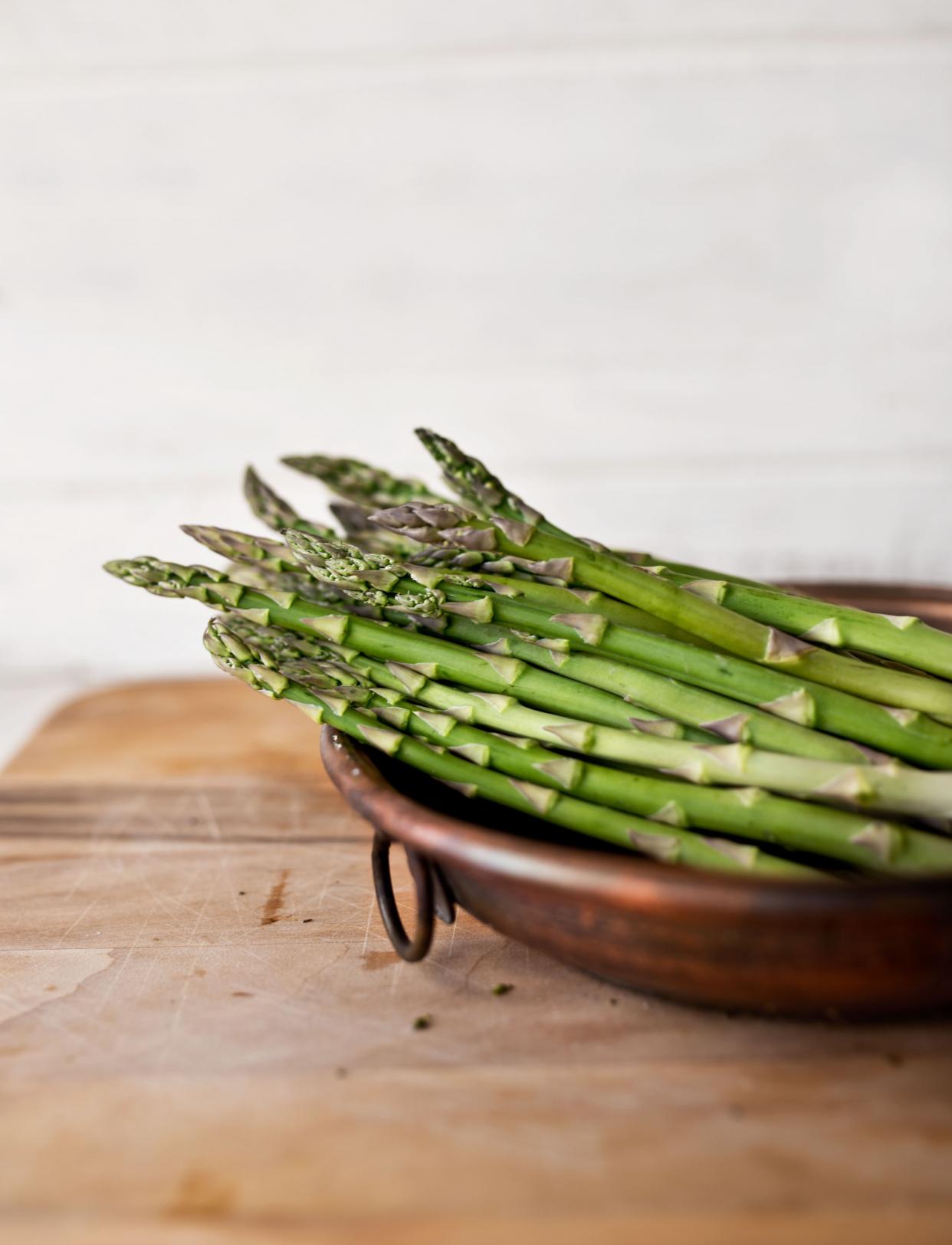
Water makes up 93% of asparagus's composition. Asparagus is low in calories and is very low in sodium. It is a good source of vitamin B6, calcium, magnesium, and zinc, and a very good source of dietary fibre, protein, beta-carotene, vitamin C, vitamin E, vitamin K, thiamin, riboflavin, rutin, niacin, folic acid, iron, phosphorus, potassium, copper, manganese, and selenium, as well as chromium, a trace mineral that regulates the ability of insulin to transport glucose from the bloodstream into cells. The amino acid asparagine gets its name from asparagus, as the asparagus plant is relatively rich in this compound.
The shoots are prepared and served in a number of ways around the world, typically as an appetizer or vegetable side dish. In Asian-style cooking, asparagus is often stir-fried. Cantonese restaurants in the United States often serve asparagus stir-fried with chicken, shrimp, or beef. It may also be quickly grilled over charcoal or hardwood embers, and is also used as an ingredient in some stews and soups. In recent years, asparagus eaten raw, as a component of a salad, has regained popularity.
Asparagus can also be pickled and stored for several years. Some brands label shoots prepared in this way as "marinated".
Stem thickness indicates the age of the plant (and not the age of the stalk), with the thicker stems coming from older plants. Older, thicker stalks can be woody, although peeling the skin at the base removes the tough layer. Peeled asparagus will poach much faster. The bottom portion of asparagus often contains sand and soil, so thorough cleaning is generally advised before cooking. Plants bearing seeds produce spears that are smaller and thinner, and plants without seeds produce larger and thicker spears. Thickness and thinness are not an indication of tenderness or toughness. The stalks are thick or thin from the moment they sprout from the ground.

Green asparagus is eaten worldwide, though the availability of imports throughout the year has made it less of a delicacy than it once was. In Europe, however, the "asparagus season is a highlight of the foodie calendar"; in the UK this traditionally begins on 23 April and ends on Midsummer Day.As in continental Europe, due to the short growing season and demand for local produce, asparagus commands a premium price.
It was once classified in the lily family, like the related Allium species, onions and garlic. However, genetic research places lilies, Allium, and asparagus in three separate families—the Liliaceae, Amaryllidaceae, and Asparagaceae, respectively—with the Amaryllidaceae and Asparagaceae being grouped together in the order Asparagales. Sources differ as to the native range of Asparagus officinalis, but generally include most of Europe and western temperate Asia. It is widely cultivated as a vegetable crop.
Only young asparagus shoots are commonly eaten: once the buds start to open ("ferning out"), the shoots quickly turn woody.

Water makes up 93% of asparagus's composition. Asparagus is low in calories and is very low in sodium. It is a good source of vitamin B6, calcium, magnesium, and zinc, and a very good source of dietary fibre, protein, beta-carotene, vitamin C, vitamin E, vitamin K, thiamin, riboflavin, rutin, niacin, folic acid, iron, phosphorus, potassium, copper, manganese, and selenium, as well as chromium, a trace mineral that regulates the ability of insulin to transport glucose from the bloodstream into cells. The amino acid asparagine gets its name from asparagus, as the asparagus plant is relatively rich in this compound.
The shoots are prepared and served in a number of ways around the world, typically as an appetizer or vegetable side dish. In Asian-style cooking, asparagus is often stir-fried. Cantonese restaurants in the United States often serve asparagus stir-fried with chicken, shrimp, or beef. It may also be quickly grilled over charcoal or hardwood embers, and is also used as an ingredient in some stews and soups. In recent years, asparagus eaten raw, as a component of a salad, has regained popularity.
Asparagus can also be pickled and stored for several years. Some brands label shoots prepared in this way as "marinated".
Stem thickness indicates the age of the plant (and not the age of the stalk), with the thicker stems coming from older plants. Older, thicker stalks can be woody, although peeling the skin at the base removes the tough layer. Peeled asparagus will poach much faster. The bottom portion of asparagus often contains sand and soil, so thorough cleaning is generally advised before cooking. Plants bearing seeds produce spears that are smaller and thinner, and plants without seeds produce larger and thicker spears. Thickness and thinness are not an indication of tenderness or toughness. The stalks are thick or thin from the moment they sprout from the ground.

Green asparagus is eaten worldwide, though the availability of imports throughout the year has made it less of a delicacy than it once was. In Europe, however, the "asparagus season is a highlight of the foodie calendar"; in the UK this traditionally begins on 23 April and ends on Midsummer Day.As in continental Europe, due to the short growing season and demand for local produce, asparagus commands a premium price.
0
0
文章
ritau
2020年05月14日

A pitaya is the fruit of several different cactus species indigenous to the Americas. Pitaya usually refers to fruit of the genus Stenocereus,while pitahaya or dragon fruit refers to fruit of the genus Hylocereus, both in the family Cactaceae. Dragon fruit is cultivated in Southeast Asia, Florida in the United States, the Caribbean, Australia, and throughout tropical and subtropical regions of the world.
These fruits are commonly known in English as "dragon fruit", a name used since around 1963, apparently resulting from the leather-like skin and prominent scaly spikes on the fruit exterior. The names pitahaya and pitaya derive from Mexico, and pitaya roja in Central America and northern South America, possibly relating to pitahaya for names of tall cacti species with flowering fruit.The fruit may also be known as a strawberry pear.
After a thorough cleaning of the seeds from the pulp of the fruit, the seeds may be stored when dried. The ideal fruit is unblemished and overripe.
Seeds grow well in a compost or potting soil mix – even as a potted indoor plant. Pitaya cacti usually germinate after between 11 and 14 days after shallow planting. As they are cacti, overwatering is a concern for home growers. As their growth continues, these climbing plants will find something to climb on, which can involve putting aerial roots down from the branches in addition to the basal roots. Once the plant reaches a mature 10 pounds in weight, the plant may flower.
Commercial plantings can be done at high density with between 1100 and 1350 plants per hectare. Plants can take up to five years to come into full commercial production, at which stage yields of 20 to 30 tons per hectare can be expected.

Pitaya flowers bloom overnight and usually wilt by the evening.They rely on nocturnal pollinators such as bats or moths for fertilization. Self-fertilization will not produce fruit in some species, and while cross-breeding has resulted in several "self-fertile" varieties, cross-pollinating with a second plant species generally increases fruit set and quality. This limits the capability of home growers to produce the fruit. However, the plants can flower between three and six times in a year depending on growing conditions. Like other cacti, if a healthy piece of the stem is broken off, it may take root in soil and become its own plant.
The plants can endure temperatures up to 40 °C (104 °F) and very short periods of frost, but will not survive long exposure to freezing temperatures. The cacti thrive most in USDA zones 10–11, but may survive outdoors in zone 9a or 9b.
Hylocereus has adapted to live in dry tropical climates with a moderate amount of rain. The dragon fruit sets on the cactus-like trees 30–50 days after flowering and can sometimes have 5-6 cycles of harvests per year. In numerous regions, it has escaped cultivation to become a weed and is classified as an invasive weed in some countries.
As the nutrient content of raw pitaya has not been thoroughly analyzed or published as of 2019, the USDA FoodData Central database reports one limited product label entry from a manufacturer of a branded product, showing that a 100 gram amount of pitaya contains 60 calories, 82% carbohydrates, 4% protein, and 11% of the Daily Value each for vitamin C and calcium.
These fruits are commonly known in English as "dragon fruit", a name used since around 1963, apparently resulting from the leather-like skin and prominent scaly spikes on the fruit exterior. The names pitahaya and pitaya derive from Mexico, and pitaya roja in Central America and northern South America, possibly relating to pitahaya for names of tall cacti species with flowering fruit.The fruit may also be known as a strawberry pear.
After a thorough cleaning of the seeds from the pulp of the fruit, the seeds may be stored when dried. The ideal fruit is unblemished and overripe.
Seeds grow well in a compost or potting soil mix – even as a potted indoor plant. Pitaya cacti usually germinate after between 11 and 14 days after shallow planting. As they are cacti, overwatering is a concern for home growers. As their growth continues, these climbing plants will find something to climb on, which can involve putting aerial roots down from the branches in addition to the basal roots. Once the plant reaches a mature 10 pounds in weight, the plant may flower.
Commercial plantings can be done at high density with between 1100 and 1350 plants per hectare. Plants can take up to five years to come into full commercial production, at which stage yields of 20 to 30 tons per hectare can be expected.

Pitaya flowers bloom overnight and usually wilt by the evening.They rely on nocturnal pollinators such as bats or moths for fertilization. Self-fertilization will not produce fruit in some species, and while cross-breeding has resulted in several "self-fertile" varieties, cross-pollinating with a second plant species generally increases fruit set and quality. This limits the capability of home growers to produce the fruit. However, the plants can flower between three and six times in a year depending on growing conditions. Like other cacti, if a healthy piece of the stem is broken off, it may take root in soil and become its own plant.
The plants can endure temperatures up to 40 °C (104 °F) and very short periods of frost, but will not survive long exposure to freezing temperatures. The cacti thrive most in USDA zones 10–11, but may survive outdoors in zone 9a or 9b.
Hylocereus has adapted to live in dry tropical climates with a moderate amount of rain. The dragon fruit sets on the cactus-like trees 30–50 days after flowering and can sometimes have 5-6 cycles of harvests per year. In numerous regions, it has escaped cultivation to become a weed and is classified as an invasive weed in some countries.
As the nutrient content of raw pitaya has not been thoroughly analyzed or published as of 2019, the USDA FoodData Central database reports one limited product label entry from a manufacturer of a branded product, showing that a 100 gram amount of pitaya contains 60 calories, 82% carbohydrates, 4% protein, and 11% of the Daily Value each for vitamin C and calcium.
0
0
文章
ritau
2020年05月10日

The soybean or soya bean (Glycine max) is a species of legume native to East Asia, widely grown for its edible bean, which has numerous uses.
Traditional unfermented food uses of soybeans include soy milk, from which tofu and tofu skin are made. Fermented soy foods include soy sauce, fermented bean paste, nattō, and tempeh. Fat-free (defatted) soybean meal is a significant and cheap source of protein for animal feeds and many packaged meals. For example, soybean products, such as textured vegetable protein (TVP), are ingredients in many meat and dairy substitutes.
Soy beans contain significant amounts of phytic acid, dietary minerals and B vitamins. Soy vegetable oil, used in food and industrial applications, is another product of processing the soybean crop. Soybean is the most important protein source for feed farm animals (that in turn yields animal protein for human consumption).
Together, protein and soybean oil content account for 56% of dry soybeans by weight (36% protein and 20% fat, table). The remainder consists of 30% carbohydrates, 9% water and 5% ash (table). Soybeans comprise approximately 8% seed coat or hull, 90% cotyledons and 2% hypocotyl axis or germ.
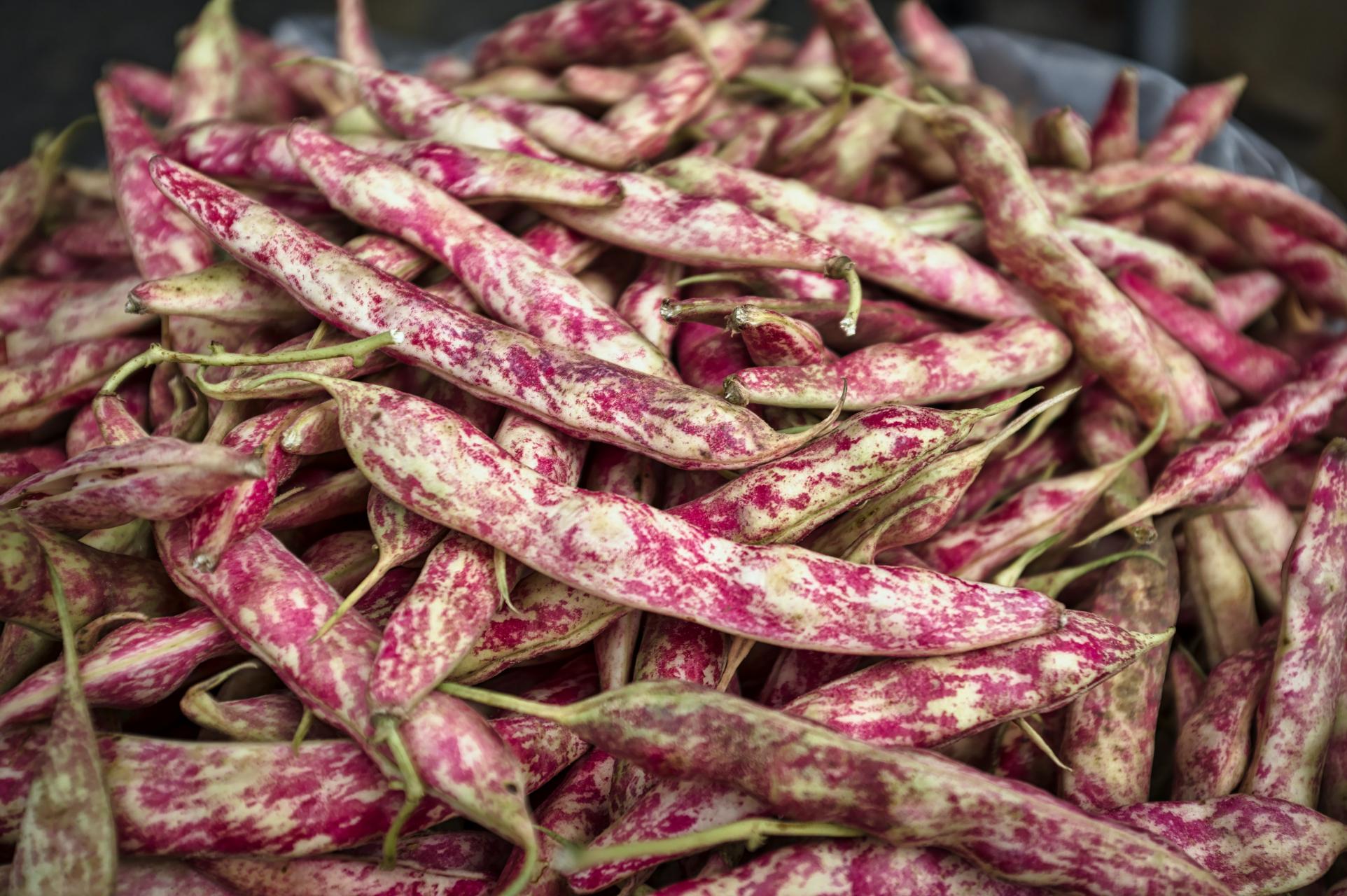
*Nutrition
100 grams of raw soybeans supply 446 calories and are 9% water, 30% carbohydrates, 20% total fat and 36% protein.
Soybeans are an exceptional source of essential nutrients, providing in a 100 gram serving (raw, for reference) high contents of the Daily Value (DV) especially for protein (36% DV), dietary fiber (37%), iron (121%), manganese (120%), phosphorus (101%) and several B vitamins, including folate (94%) (table). High contents also exist for vitamin K, magnesium, zinc and potassium (table).
For human consumption, soybeans must be cooked with "wet" heat to destroy the trypsin inhibitors (serine protease inhibitors). Raw soybeans, including the immature green form, are toxic to all monogastric animals.
*Protein
Further information: Complete protein, Protein quality, and Soy protein
Most soy protein is a relatively heat-stable storage protein. This heat stability enables soy food products requiring high temperature cooking, such as tofu, soy milk and textured vegetable protein (soy flour) to be made. Soy protein is essentially identical to the protein of other legume seeds and pulses.
Soy is a good source of protein for vegetarians and vegans or for people who want to reduce the amount of meat they eat, according to the US Food and Drug Administration:

Soy protein products can be good substitutes for animal products because, unlike some other beans, soy offers a 'complete' protein profile. ... Soy protein products can replace animal-based foods—which also have complete proteins but tend to contain more fat, especially saturated fat—without requiring major adjustments elsewhere in the diet.
The Protein Digestibility Corrected Amino Acid Score (PDCAAS) of soy protein is the nutritional equivalent of meat, eggs, and casein for human growth and health. Soybean protein isolate has a biological value of 74, whole soybeans 96, soybean milk 91, and eggs 97.
Traditional unfermented food uses of soybeans include soy milk, from which tofu and tofu skin are made. Fermented soy foods include soy sauce, fermented bean paste, nattō, and tempeh. Fat-free (defatted) soybean meal is a significant and cheap source of protein for animal feeds and many packaged meals. For example, soybean products, such as textured vegetable protein (TVP), are ingredients in many meat and dairy substitutes.
Soy beans contain significant amounts of phytic acid, dietary minerals and B vitamins. Soy vegetable oil, used in food and industrial applications, is another product of processing the soybean crop. Soybean is the most important protein source for feed farm animals (that in turn yields animal protein for human consumption).
Together, protein and soybean oil content account for 56% of dry soybeans by weight (36% protein and 20% fat, table). The remainder consists of 30% carbohydrates, 9% water and 5% ash (table). Soybeans comprise approximately 8% seed coat or hull, 90% cotyledons and 2% hypocotyl axis or germ.

*Nutrition
100 grams of raw soybeans supply 446 calories and are 9% water, 30% carbohydrates, 20% total fat and 36% protein.
Soybeans are an exceptional source of essential nutrients, providing in a 100 gram serving (raw, for reference) high contents of the Daily Value (DV) especially for protein (36% DV), dietary fiber (37%), iron (121%), manganese (120%), phosphorus (101%) and several B vitamins, including folate (94%) (table). High contents also exist for vitamin K, magnesium, zinc and potassium (table).
For human consumption, soybeans must be cooked with "wet" heat to destroy the trypsin inhibitors (serine protease inhibitors). Raw soybeans, including the immature green form, are toxic to all monogastric animals.
*Protein
Further information: Complete protein, Protein quality, and Soy protein
Most soy protein is a relatively heat-stable storage protein. This heat stability enables soy food products requiring high temperature cooking, such as tofu, soy milk and textured vegetable protein (soy flour) to be made. Soy protein is essentially identical to the protein of other legume seeds and pulses.
Soy is a good source of protein for vegetarians and vegans or for people who want to reduce the amount of meat they eat, according to the US Food and Drug Administration:

Soy protein products can be good substitutes for animal products because, unlike some other beans, soy offers a 'complete' protein profile. ... Soy protein products can replace animal-based foods—which also have complete proteins but tend to contain more fat, especially saturated fat—without requiring major adjustments elsewhere in the diet.
The Protein Digestibility Corrected Amino Acid Score (PDCAAS) of soy protein is the nutritional equivalent of meat, eggs, and casein for human growth and health. Soybean protein isolate has a biological value of 74, whole soybeans 96, soybean milk 91, and eggs 97.
0
0
文章
ritau
2020年04月19日

Quarantine life, indoor activities are recommemded, today let's plant a ginger at home!
1. Choose your ginger plant.
There are many species of ginger. To grow the most common edible variety, Zingiber officinale, all you need is ginger root from the grocery store. You can find ornamental ginger plants with vibrant flowers at a plant nursery, but these are often inedible.
2.Cut the rhizome into pieces (optional).
If you'd like to grow more than one plant, cut the ginger with a sanitized knife or shears. Any piece at least 1 inch (2.5 cm) wide with one or more eyes can grow into a separate plant. After cutting, leave the pieces in a dry location for a few days to allow them to heal. They will form a protective callus over the cut surface, which reduces the risk of infection.
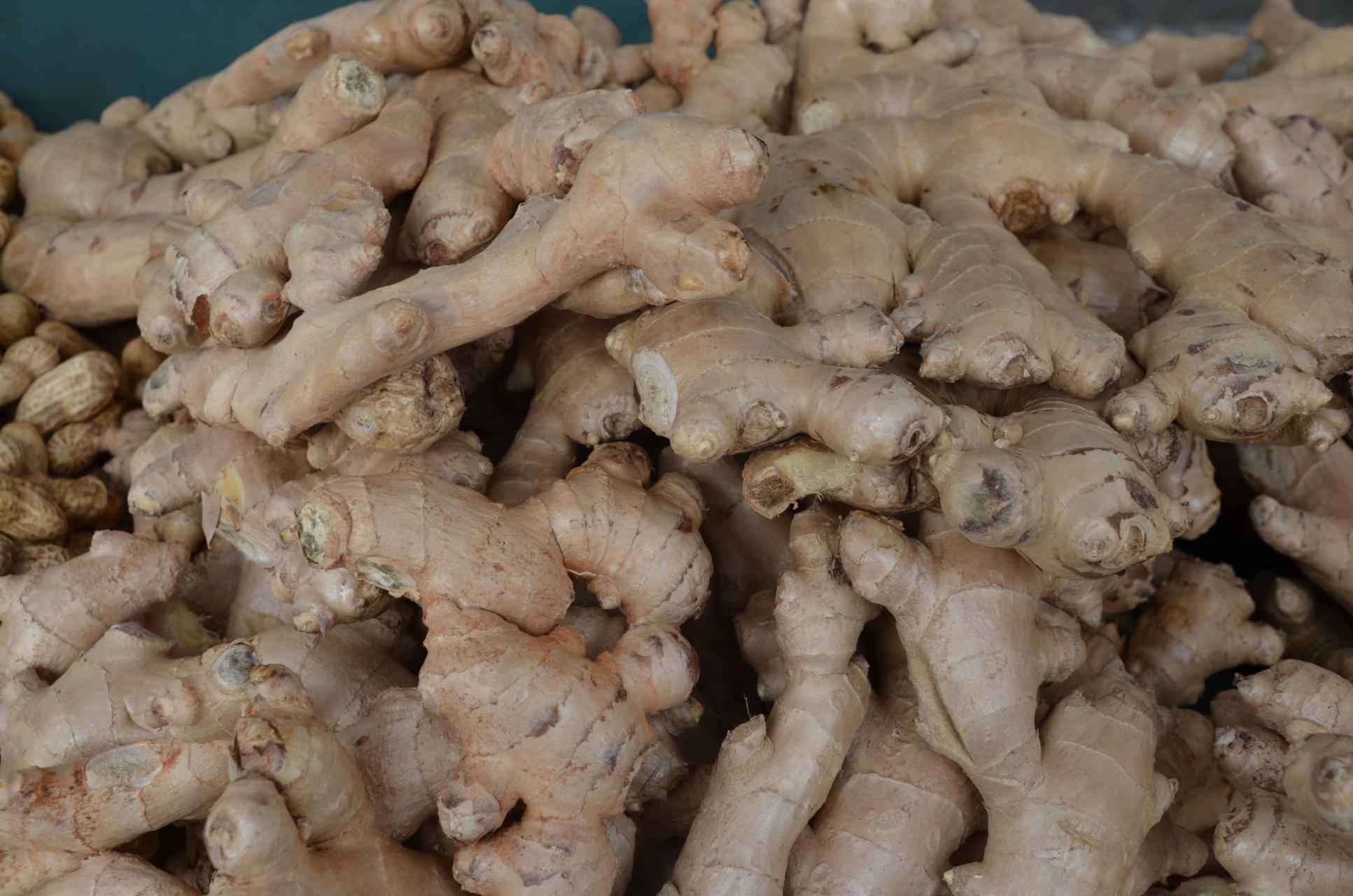
3.Prepare the soil.
Ginger thrives on high-quality, well-draining soil. Mixing garden soil with an equal amount of well-rotted compost should do the trick. If your soil is poor quality or heavy in clay, purchase rich potting soil instead.
4.Choose a location.
Ginger prefers partial shade or areas with morning sun only, away from large roots. The growing location should be sheltered from wind and moist, but not swampy.If the ginger plant has not yet germinated, soil temperatures must be warm — ideally between 71 and 77ºF (22–25ºC).
5.Plant the ginger.
Plant each piece of ginger 2–4 inches (5–10 cm) below loose soil, with the buds pointing upward. If planting in rows, keep each piece 8 inches (20 cm) apart. If planting in pots, plant one piece per large pot (14 in./35 cm diameter).
*Ginger grows slowly, especially outside of the tropics. A sprout might appear within a few days if you're lucky, but continue to water for at least a couple weeks before giving up on the plant.
*Fertilization is not required if the ginger is in rich soil, especially if you've mixed in compost. Have the soil tested first and fertilize accordingly. If soil is poor or you'd like to improve yield, fertilize with a small amount of complete liquid fertilizer each month.
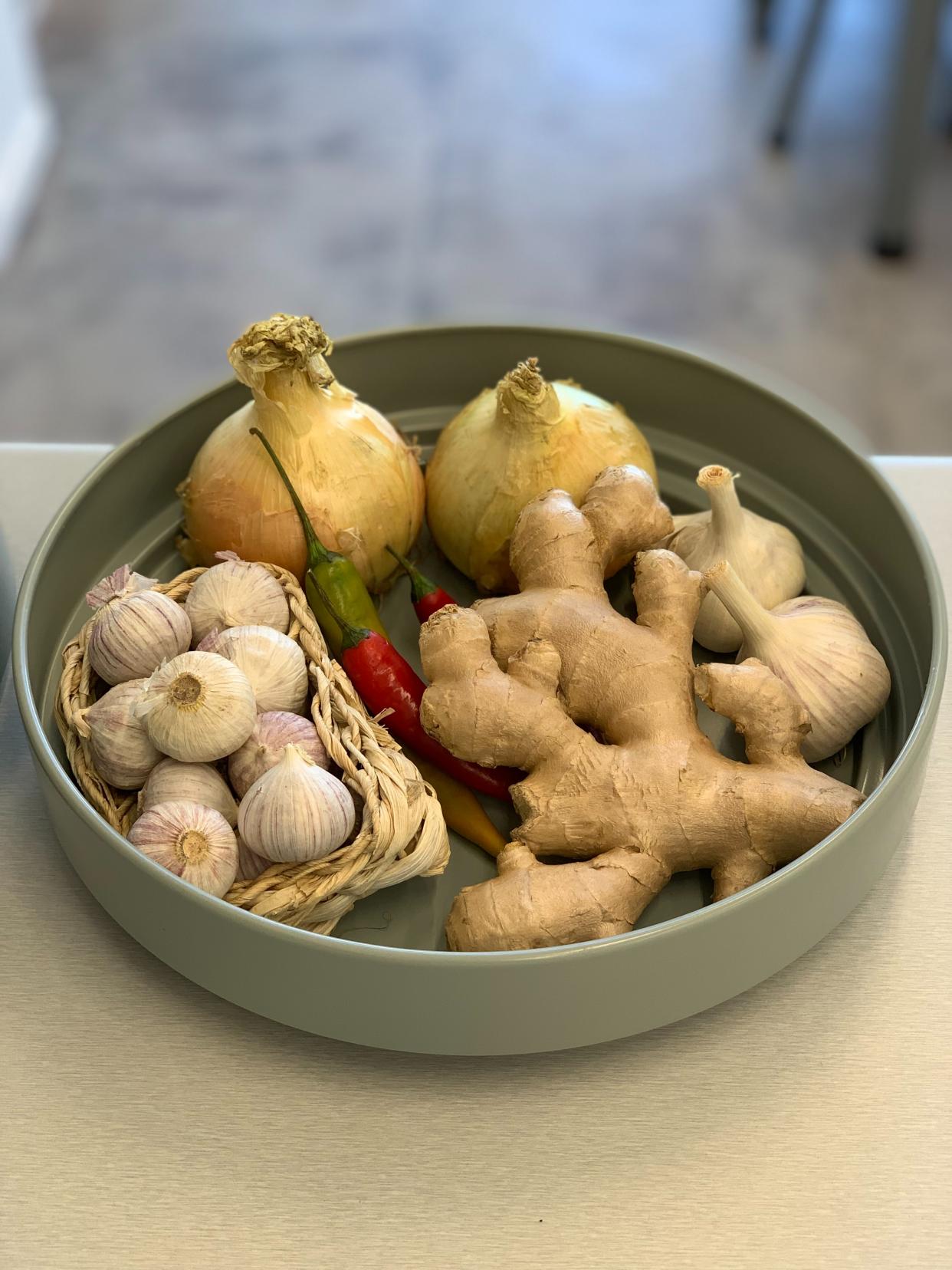
1. Choose your ginger plant.
There are many species of ginger. To grow the most common edible variety, Zingiber officinale, all you need is ginger root from the grocery store. You can find ornamental ginger plants with vibrant flowers at a plant nursery, but these are often inedible.
2.Cut the rhizome into pieces (optional).
If you'd like to grow more than one plant, cut the ginger with a sanitized knife or shears. Any piece at least 1 inch (2.5 cm) wide with one or more eyes can grow into a separate plant. After cutting, leave the pieces in a dry location for a few days to allow them to heal. They will form a protective callus over the cut surface, which reduces the risk of infection.

3.Prepare the soil.
Ginger thrives on high-quality, well-draining soil. Mixing garden soil with an equal amount of well-rotted compost should do the trick. If your soil is poor quality or heavy in clay, purchase rich potting soil instead.
4.Choose a location.
Ginger prefers partial shade or areas with morning sun only, away from large roots. The growing location should be sheltered from wind and moist, but not swampy.If the ginger plant has not yet germinated, soil temperatures must be warm — ideally between 71 and 77ºF (22–25ºC).
5.Plant the ginger.
Plant each piece of ginger 2–4 inches (5–10 cm) below loose soil, with the buds pointing upward. If planting in rows, keep each piece 8 inches (20 cm) apart. If planting in pots, plant one piece per large pot (14 in./35 cm diameter).
*Ginger grows slowly, especially outside of the tropics. A sprout might appear within a few days if you're lucky, but continue to water for at least a couple weeks before giving up on the plant.
*Fertilization is not required if the ginger is in rich soil, especially if you've mixed in compost. Have the soil tested first and fertilize accordingly. If soil is poor or you'd like to improve yield, fertilize with a small amount of complete liquid fertilizer each month.

0
0
文章
ritau
2020年04月15日

Helianthus is a genus of plants comprising about 70 species. Except for three species in South America, all Helianthus species are native to North America and Central America. The common names "sunflower" and "common sunflower" typically refer to the popular annual species Helianthus annuus, whose round flower heads in combination with the ligules look like the sun. This and other species, notably Jerusalem artichoke , are cultivated in temperate regions and some tropical regions as food crops for humans, cattle, and poultry, and as ornamental plants.The species H. annuus typically grows during the summer and into early fall, with the peak growth season being mid-summer.
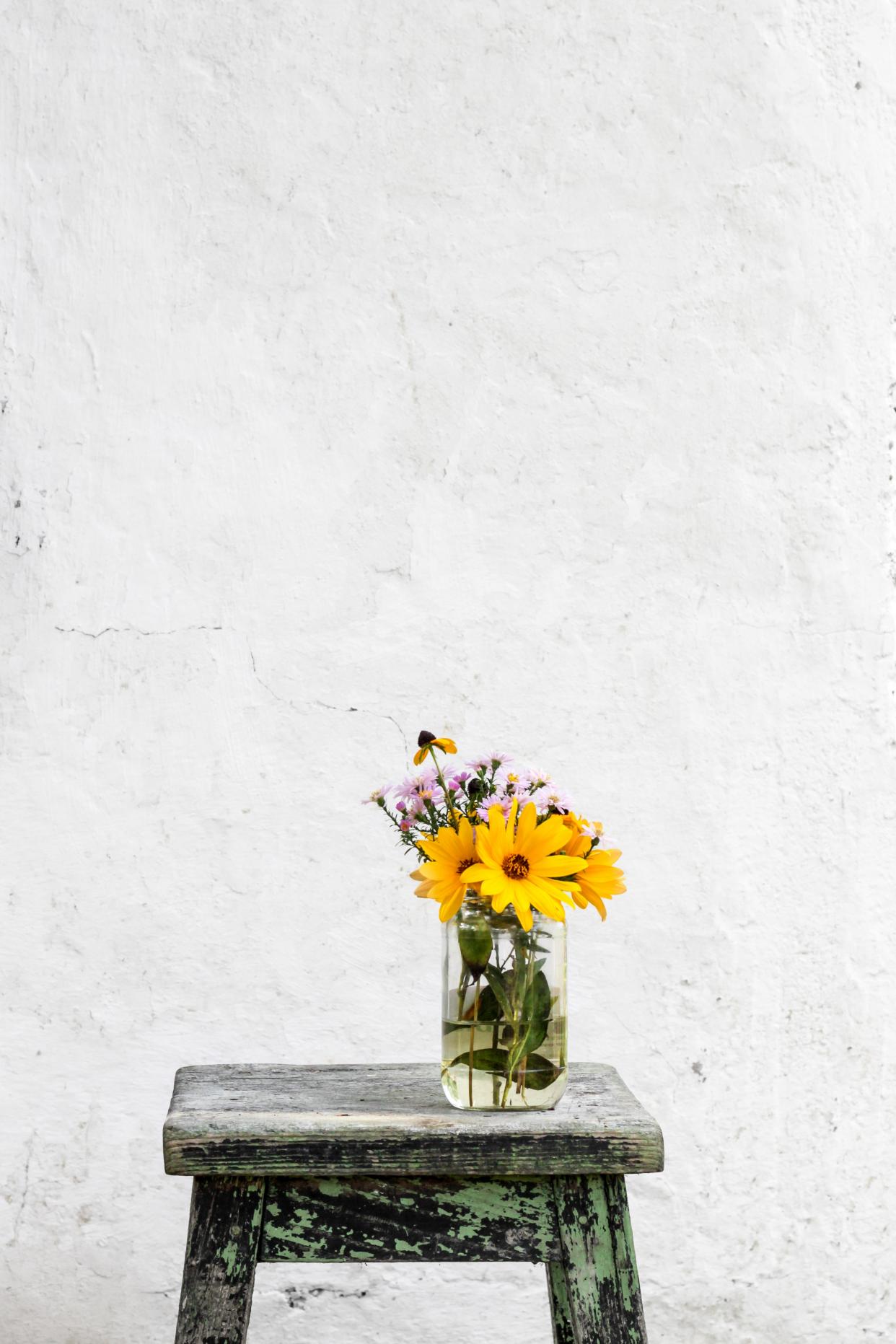
Perennial sunflower species are not as common in garden use due to their tendency to spread rapidly and become invasive. The whorled sunflower, Helianthus verticillatus, was listed as an endangered species in 2014 when the U.S. Fish and Wildlife Service issued a final rule protecting it under the Endangered Species Act. The primary threats are industrial forestry and pine plantations in Alabama, Georgia, and Tennessee. They grow to 1.8 m (6 ft) and are primarily found in woodlands, adjacent to creeks and moist, prairie-like areas.
I believe the most famous sunflower is Vincent van Gogh's.
Van Gogh’s paintings of Sunflowers are among his most famous. He did them in Arles, in the south of France, in 1888 and 1889. Vincent painted a total of five large canvases with sunflowers in a vase, with three shades of yellow ‘and nothing else’. In this way, he demonstrated that it was possible to create an image with numerous variations of a single colour, without any loss of eloquence.
The sunflower paintings had a special significance for Van Gogh: they communicated ‘gratitude’, he wrote. He hung the first two in the room of his friend, the painter Paul Gauguin, who came to live with him for a while in the Yellow House. Gauguin was impressed by the sunflowers, which he thought were ‘completely Vincent’. Van Gogh had already painted a new version during his friend’s stay and Gauguin later asked for one as a gift, which Vincent was reluctant to give him. He later produced two loose copies, however, one of which is now in the Van Gogh Museum.
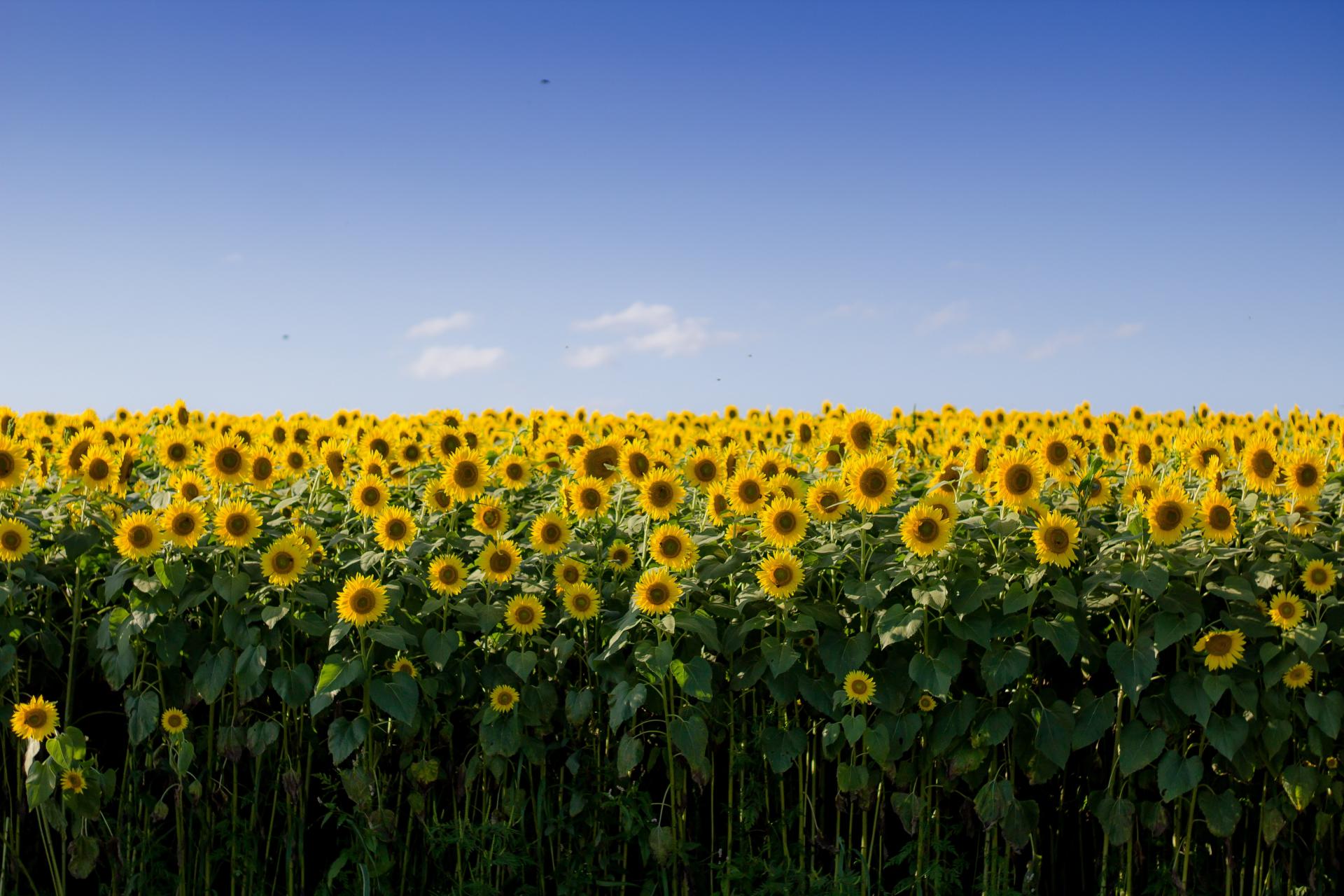

Perennial sunflower species are not as common in garden use due to their tendency to spread rapidly and become invasive. The whorled sunflower, Helianthus verticillatus, was listed as an endangered species in 2014 when the U.S. Fish and Wildlife Service issued a final rule protecting it under the Endangered Species Act. The primary threats are industrial forestry and pine plantations in Alabama, Georgia, and Tennessee. They grow to 1.8 m (6 ft) and are primarily found in woodlands, adjacent to creeks and moist, prairie-like areas.
I believe the most famous sunflower is Vincent van Gogh's.
Van Gogh’s paintings of Sunflowers are among his most famous. He did them in Arles, in the south of France, in 1888 and 1889. Vincent painted a total of five large canvases with sunflowers in a vase, with three shades of yellow ‘and nothing else’. In this way, he demonstrated that it was possible to create an image with numerous variations of a single colour, without any loss of eloquence.
The sunflower paintings had a special significance for Van Gogh: they communicated ‘gratitude’, he wrote. He hung the first two in the room of his friend, the painter Paul Gauguin, who came to live with him for a while in the Yellow House. Gauguin was impressed by the sunflowers, which he thought were ‘completely Vincent’. Van Gogh had already painted a new version during his friend’s stay and Gauguin later asked for one as a gift, which Vincent was reluctant to give him. He later produced two loose copies, however, one of which is now in the Van Gogh Museum.

0
0
文章
ritau
2020年04月08日

Have you ever seen a Marimo, the cute moss ball?
Marimo (also known as Cladophora ball, moss ball, moss ball pets, or lake ball) is a rare growth form of Aegagropila linnaei (a species of filamentous green algae) in which the algae grow into large green balls with a velvety appearance. Marimo are eukaryotic.
The species can be found in a number of lakes and rivers in Japan and Northern Europe. Colonies of marimo balls are known to form in Japan and Iceland, but their population has been declining.
Marimo were first described in the 1820s by Anton E. Sauter, found in Lake Zell, Austria. The genus Aegagropila was established by Friedrich T. Kützing (1843) with A. linnaei as the type species based on its formation of spherical aggregations, but all the Aegagropila species were transferred to subgenus Aegagropila of genus Cladophora later by the same author (Kützing 1849). Subsequently, A. linnaei was placed in the genus Cladophora in the Cladophorales and was renamed Cladophora aegagropila (L.) Rabenhorst and Cl. sauteri (Nees ex Kütz.) Kütz. Extensive DNA research in 2002 returned the name to Aegagropila linnaei. The presence of chitin in the cell walls makes it distinct from the genus Cladophora.
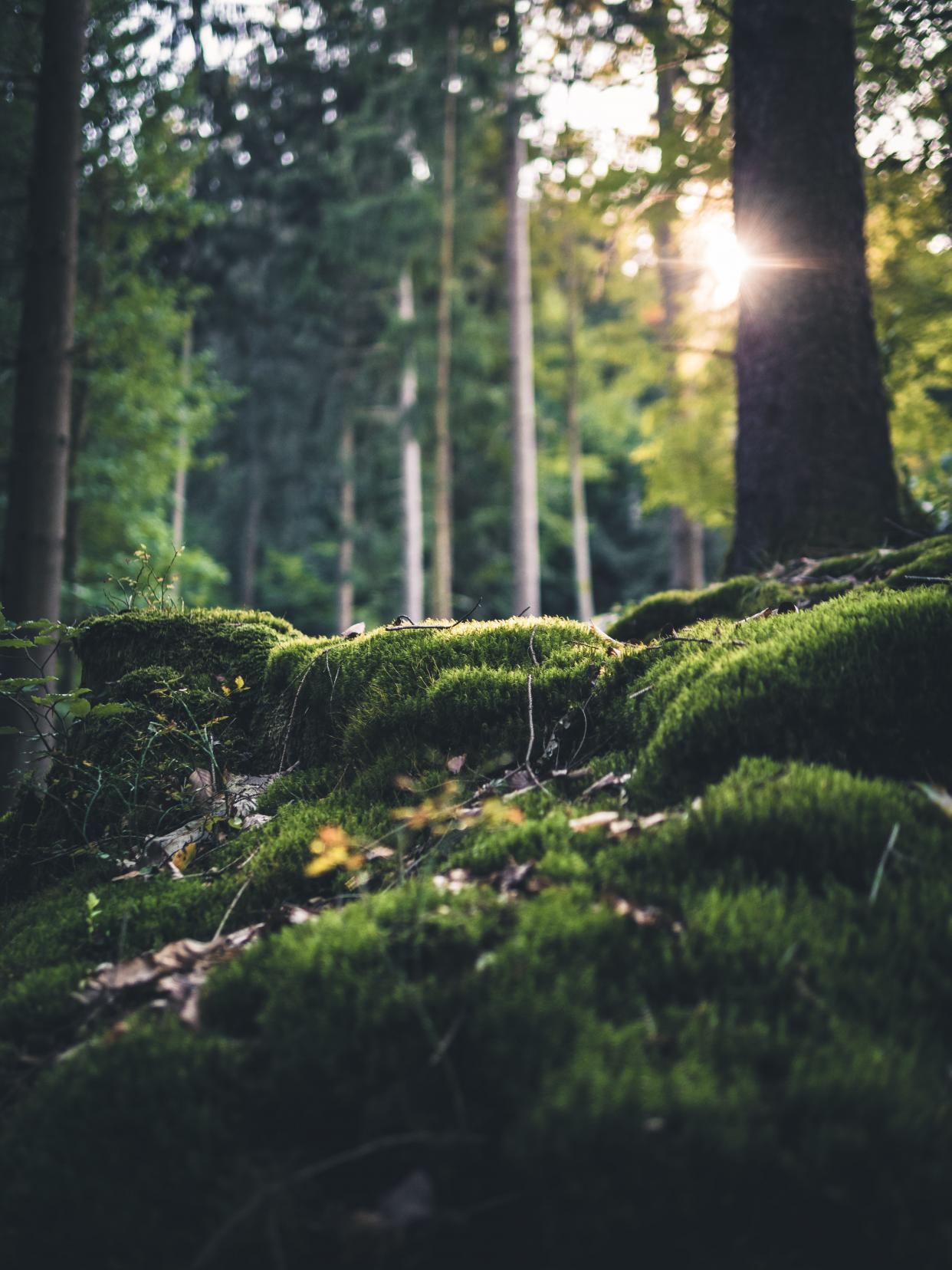
The plant was named marimo by the Japanese botanist Takiya Kawakami in 1898. Mari is a bouncy play ball. Mo is a generic term for plants that grow in water. The native names in Ainu are torasampe (lake goblin) and tokarip (lake roller). They are sometimes sold in aquariums under the name "Japanese moss balls" although they are unrelated to moss. In Iceland the lake balls are called kúluskítur by the local fishermen at Lake Mývatn (kúla = ball, skítur = muck) where the "muck" is any weeds that get entangled in their fishing nets. The generic name Aegagropila is Greek for "goat hair".
Marimo's preferred habitat is in lakes with a low or moderate biological activity, and with moderate or high levels of calcium.
The species is sensitive to the amount of nutrients in the water. An excess of nutrients (due to agriculture and fish farming), along with mud deposition from human activity are thought to be the main causes for its disappearance from many lakes.The species still exists in Lake Zeller in Austria (where it was first discovered in the 1820s) but the lake ball growth form has not been found there since around 1910. The same has happened in most locations in England and Scotland, where mainly the attached form can be found.Dense colonies of marimo were discovered in Lake Mývatn in Iceland in 1978, but they have shrunk considerably since then. By 2014 the marimo had almost completely disappeared from the lake due to an excess of nutrients.The species can still be found in several places in Japan, but populations have also declined there. At Lake Akan, a great effort is spent on the conservation of the lake balls.The marimo has been a protected species in Japan since the 1920s, and in Iceland since 2006. Lake Akan is protected as a national park and Lake Mývatn is protected as a nature reserve.
Marimo balls are a rare curiosity. In Japan, the Ainu people hold a three-day marimo festival every October at Lake Akan.
Because of their appealing appearance, the lake balls also serve as a medium for environmental education. Small balls sold as souvenirs are hand rolled from free-floating filaments.A widely marketed stuffed toy character known as Marimokkori takes the anthropomorphic form of the marimo algae as one part of its design.Marimo are sometimes sold for display in aquariums, those often originate from Ukrainian lakes like the Shatsk's lakes. Balls sold in Japanese aquarium shops are of European origin, collecting them from Lake Akan is prohibited.
Let us protect the cute Marimo!
Marimo (also known as Cladophora ball, moss ball, moss ball pets, or lake ball) is a rare growth form of Aegagropila linnaei (a species of filamentous green algae) in which the algae grow into large green balls with a velvety appearance. Marimo are eukaryotic.
The species can be found in a number of lakes and rivers in Japan and Northern Europe. Colonies of marimo balls are known to form in Japan and Iceland, but their population has been declining.
Marimo were first described in the 1820s by Anton E. Sauter, found in Lake Zell, Austria. The genus Aegagropila was established by Friedrich T. Kützing (1843) with A. linnaei as the type species based on its formation of spherical aggregations, but all the Aegagropila species were transferred to subgenus Aegagropila of genus Cladophora later by the same author (Kützing 1849). Subsequently, A. linnaei was placed in the genus Cladophora in the Cladophorales and was renamed Cladophora aegagropila (L.) Rabenhorst and Cl. sauteri (Nees ex Kütz.) Kütz. Extensive DNA research in 2002 returned the name to Aegagropila linnaei. The presence of chitin in the cell walls makes it distinct from the genus Cladophora.

The plant was named marimo by the Japanese botanist Takiya Kawakami in 1898. Mari is a bouncy play ball. Mo is a generic term for plants that grow in water. The native names in Ainu are torasampe (lake goblin) and tokarip (lake roller). They are sometimes sold in aquariums under the name "Japanese moss balls" although they are unrelated to moss. In Iceland the lake balls are called kúluskítur by the local fishermen at Lake Mývatn (kúla = ball, skítur = muck) where the "muck" is any weeds that get entangled in their fishing nets. The generic name Aegagropila is Greek for "goat hair".
Marimo's preferred habitat is in lakes with a low or moderate biological activity, and with moderate or high levels of calcium.
The species is sensitive to the amount of nutrients in the water. An excess of nutrients (due to agriculture and fish farming), along with mud deposition from human activity are thought to be the main causes for its disappearance from many lakes.The species still exists in Lake Zeller in Austria (where it was first discovered in the 1820s) but the lake ball growth form has not been found there since around 1910. The same has happened in most locations in England and Scotland, where mainly the attached form can be found.Dense colonies of marimo were discovered in Lake Mývatn in Iceland in 1978, but they have shrunk considerably since then. By 2014 the marimo had almost completely disappeared from the lake due to an excess of nutrients.The species can still be found in several places in Japan, but populations have also declined there. At Lake Akan, a great effort is spent on the conservation of the lake balls.The marimo has been a protected species in Japan since the 1920s, and in Iceland since 2006. Lake Akan is protected as a national park and Lake Mývatn is protected as a nature reserve.
Marimo balls are a rare curiosity. In Japan, the Ainu people hold a three-day marimo festival every October at Lake Akan.
Because of their appealing appearance, the lake balls also serve as a medium for environmental education. Small balls sold as souvenirs are hand rolled from free-floating filaments.A widely marketed stuffed toy character known as Marimokkori takes the anthropomorphic form of the marimo algae as one part of its design.Marimo are sometimes sold for display in aquariums, those often originate from Ukrainian lakes like the Shatsk's lakes. Balls sold in Japanese aquarium shops are of European origin, collecting them from Lake Akan is prohibited.
Let us protect the cute Marimo!
0
0
文章
ritau
2020年04月05日

The peony or paeony is a flowering plant in the genus Paeonia, the only genus in the family Paeoniaceae. Peonies are native to Asia, Europe and Western North America. Scientists differ on the number of species that can be distinguished, ranging from 25 to 40, although the current consensus is 33 known species. The relationships between the species need to be further clarified.
Peonies are among the most popular garden plants in temperate regions. Herbaceous peonies are also sold as cut flowers on a large scale, although generally only available in late spring and early summer. An emerging source of peonies in mid to late summer is the Alaskan market. Unique growing conditions due to long hours of sunlight create availability from Alaska when other sources have completed harvest.
The peony is among the longest-used flowers in Eastern culture. Along with the plum blossom, it is a traditional floral symbol of China, where the Paeonia suffruticosa is called 牡丹 (mǔdān). It is also known as 富貴花 (fùguìhuā) "flower of riches and honour" or 花王 (huawang) "king of the flowers", and is used symbolically in Chinese art. In 1903, the Qing dynasty declared the peony as the national flower. Currently, the Republic of China government in Taiwan designates the plum blossom as the national flower, while the People's Republic of China government has no legally designated national flower. In 1994, the peony was proposed as the national flower after a nationwide poll, but the National People's Congress failed to ratify the selection. In 2003, another selection process was initiated, but no choice has been made to date.

The ancient Chinese city Luoyang has a reputation as a cultivation centre for the peonies. Throughout Chinese history, peonies in Luoyang have been said to be the finest in the country. Dozens of peony exhibitions and shows are still held there annually.
In the Middle Ages, peonies were often painted with their ripe seed-capsules, since it was the seeds, not the flowers, which were medically significant. Ancient superstition dictated that great care be taken not to be seen by a woodpecker while picking the plant's fruit, or the bird might peck out one's eyes.
In 1957, the Indiana General Assembly passed a law to make the peony the state flower of Indiana, a title which it holds to this day. It replaced the zinnia, which had been the state flower since 1931.
Mischievous nymphs were said to hide in the petals of the Peony, giving it the meaning of Shame or Bashfulness in the Language of Flowers. While the peony takes several years to re-establish itself when moved, it blooms annually for decades once it has done so.
Peonies tend to attract ants to the flower buds. This is due to the nectar that forms on the outside of the flower buds, and is not required for the plants' own pollination or other growth. The presence of ants is thought to provide some deterrence to other harmful insects though, so the production of ant-attracting nectar is plausibly a functional adaptation.Peonies are a common subject in tattoos, often used along with koi-fish. The popular use of peonies in Japanese tattoo was inspired by the ukiyo-e artist Utagawa Kuniyoshi's illustrations of Suikoden, a classical Chinese novel. His paintings of warrior-heroes covered in pictorial tattoos included lions, tigers, dragons, koi fish, and peonies, among other symbols. The peony became a masculine motif, associated with a devil-may-care attitude and disregard for consequence.
Famous painters of peonies have included Conrad Gessner (ca. 1550) and Auguste Renoir in 1879. Paeonia officinalis can be found in the altar picture of Maria im Rosenhag by Schongauer in the former Dominican Church in Colmar.The Italian Jesuit, painter and architect Giuseppe Castiglione (1688-1766), who worked at the court of the Qianlong Emperor in the Qing dynasty, painted peonies.

Peonies are among the most popular garden plants in temperate regions. Herbaceous peonies are also sold as cut flowers on a large scale, although generally only available in late spring and early summer. An emerging source of peonies in mid to late summer is the Alaskan market. Unique growing conditions due to long hours of sunlight create availability from Alaska when other sources have completed harvest.
The peony is among the longest-used flowers in Eastern culture. Along with the plum blossom, it is a traditional floral symbol of China, where the Paeonia suffruticosa is called 牡丹 (mǔdān). It is also known as 富貴花 (fùguìhuā) "flower of riches and honour" or 花王 (huawang) "king of the flowers", and is used symbolically in Chinese art. In 1903, the Qing dynasty declared the peony as the national flower. Currently, the Republic of China government in Taiwan designates the plum blossom as the national flower, while the People's Republic of China government has no legally designated national flower. In 1994, the peony was proposed as the national flower after a nationwide poll, but the National People's Congress failed to ratify the selection. In 2003, another selection process was initiated, but no choice has been made to date.

The ancient Chinese city Luoyang has a reputation as a cultivation centre for the peonies. Throughout Chinese history, peonies in Luoyang have been said to be the finest in the country. Dozens of peony exhibitions and shows are still held there annually.
In the Middle Ages, peonies were often painted with their ripe seed-capsules, since it was the seeds, not the flowers, which were medically significant. Ancient superstition dictated that great care be taken not to be seen by a woodpecker while picking the plant's fruit, or the bird might peck out one's eyes.
In 1957, the Indiana General Assembly passed a law to make the peony the state flower of Indiana, a title which it holds to this day. It replaced the zinnia, which had been the state flower since 1931.
Mischievous nymphs were said to hide in the petals of the Peony, giving it the meaning of Shame or Bashfulness in the Language of Flowers. While the peony takes several years to re-establish itself when moved, it blooms annually for decades once it has done so.
Peonies tend to attract ants to the flower buds. This is due to the nectar that forms on the outside of the flower buds, and is not required for the plants' own pollination or other growth. The presence of ants is thought to provide some deterrence to other harmful insects though, so the production of ant-attracting nectar is plausibly a functional adaptation.Peonies are a common subject in tattoos, often used along with koi-fish. The popular use of peonies in Japanese tattoo was inspired by the ukiyo-e artist Utagawa Kuniyoshi's illustrations of Suikoden, a classical Chinese novel. His paintings of warrior-heroes covered in pictorial tattoos included lions, tigers, dragons, koi fish, and peonies, among other symbols. The peony became a masculine motif, associated with a devil-may-care attitude and disregard for consequence.
Famous painters of peonies have included Conrad Gessner (ca. 1550) and Auguste Renoir in 1879. Paeonia officinalis can be found in the altar picture of Maria im Rosenhag by Schongauer in the former Dominican Church in Colmar.The Italian Jesuit, painter and architect Giuseppe Castiglione (1688-1766), who worked at the court of the Qianlong Emperor in the Qing dynasty, painted peonies.

0
0
文章
ritau
2020年03月26日

Lilies are genus of herbaceous flowering plants growing from bulbs, all with large prominent flowers. Lilies are a group of flowering plants which are important in culture and literature in much of the world. Most species are native to the temperate northern hemisphere, though their range extends into the northern subtropics. Many other plants have "lily" in their common name but are not related to true lilies.

Lilies are tall perennials ranging in height from 2–6 ft (60–180 cm). They form naked or tunicless scaly underground bulbs which are their organs of perennation. In some North American species the base of the bulb develops into rhizomes, on which numerous small bulbs are found. Some species develop stolons. Most bulbs are buried deep in the ground, but a few species form bulbs near the soil surface. Many species form stem-roots. With these, the bulb grows naturally at some depth in the soil, and each year the new stem puts out adventitious roots above the bulb as it emerges from the soil. These roots are in addition to the basal roots that develop at the base of the bulb.
The flowers are large, often fragrant, and come in a wide range of colors including whites, yellows, oranges, pinks, reds and purples. Markings include spots and brush strokes. The plants are late spring- or summer-flowering. Flowers are borne in racemes or umbels at the tip of the stem, with six tepals spreading or reflexed, to give flowers varying from funnel shape to a "Turk's cap". The tepals are free from each other, and bear a nectary at the base of each flower. The ovary is 'superior', borne above the point of attachment of the anthers. The fruit is a three-celled capsule.

Many species are widely grown in the garden in temperate and sub-tropical regions. They may also be grown as potted plants. Numerous ornamental hybrids have been developed. They can be used in herbaceous borders, woodland and shrub plantings, and as patio plants. Some lilies, especially Lilium longiflorum, form important cut flower crops. These may be forced for particular markets; for instance, Lilium longiflorum for the Easter trade, when it may be called the Easter lily.
Lilies are usually planted as bulbs in the dormant season. They are best planted in a south-facing (northern hemisphere), slightly sloping aspect, in sun or part shade, at a depth 2½ times the height of the bulb (except Lilium candidum which should be planted at the surface). Most prefer a porous, loamy soil, and good drainage is essential. Most species bloom in July or August (northern hemisphere). The flowering periods of certain lily species begin in late spring, while others bloom in late summer or early autumn.They have contractile roots which pull the plant down to the correct depth, therefore it is better to plant them too shallowly than too deep. A soil pH of around 6.5 is generally safe. The soil should be well-drained, and plants must be kept watered during the growing season. Some plants have strong wiry stems, but those with heavy flower heads may need staking.


Lilies are tall perennials ranging in height from 2–6 ft (60–180 cm). They form naked or tunicless scaly underground bulbs which are their organs of perennation. In some North American species the base of the bulb develops into rhizomes, on which numerous small bulbs are found. Some species develop stolons. Most bulbs are buried deep in the ground, but a few species form bulbs near the soil surface. Many species form stem-roots. With these, the bulb grows naturally at some depth in the soil, and each year the new stem puts out adventitious roots above the bulb as it emerges from the soil. These roots are in addition to the basal roots that develop at the base of the bulb.
The flowers are large, often fragrant, and come in a wide range of colors including whites, yellows, oranges, pinks, reds and purples. Markings include spots and brush strokes. The plants are late spring- or summer-flowering. Flowers are borne in racemes or umbels at the tip of the stem, with six tepals spreading or reflexed, to give flowers varying from funnel shape to a "Turk's cap". The tepals are free from each other, and bear a nectary at the base of each flower. The ovary is 'superior', borne above the point of attachment of the anthers. The fruit is a three-celled capsule.

Many species are widely grown in the garden in temperate and sub-tropical regions. They may also be grown as potted plants. Numerous ornamental hybrids have been developed. They can be used in herbaceous borders, woodland and shrub plantings, and as patio plants. Some lilies, especially Lilium longiflorum, form important cut flower crops. These may be forced for particular markets; for instance, Lilium longiflorum for the Easter trade, when it may be called the Easter lily.
Lilies are usually planted as bulbs in the dormant season. They are best planted in a south-facing (northern hemisphere), slightly sloping aspect, in sun or part shade, at a depth 2½ times the height of the bulb (except Lilium candidum which should be planted at the surface). Most prefer a porous, loamy soil, and good drainage is essential. Most species bloom in July or August (northern hemisphere). The flowering periods of certain lily species begin in late spring, while others bloom in late summer or early autumn.They have contractile roots which pull the plant down to the correct depth, therefore it is better to plant them too shallowly than too deep. A soil pH of around 6.5 is generally safe. The soil should be well-drained, and plants must be kept watered during the growing season. Some plants have strong wiry stems, but those with heavy flower heads may need staking.

0
0
文章
ritau
2020年03月22日

Geranium is a genus of 422 species of flowering annual, biennial, and perennial plants that are commonly known as geraniums or cranesbills. They are found throughout the temperate regions of the world and the mountains of the tropics, but mostly in the eastern part of the Mediterranean region.

The palmately cleft leaves are broadly circular in form. The flowers have five petals and are coloured white, pink, purple or blue, often with distinctive veining. Geraniums will grow in any soil as long as it is not waterlogged. Propagation is by semiripe cuttings in summer, by seed, or by division in autumn or spring.
Geraniums are eaten by the larvae of some Lepidoptera species including brown-tail, ghost moth, and mouse moth. At least several species of Geranium are gynodioecious.The species Geranium viscosissimum (sticky geranium) is considered to be protocarnivorous.
The genus name is derived from the Greek γέρανος (géranos) or γερανός (geranós) ‘crane’. The English name ‘cranesbill’ derives from the appearance of the fruit capsule of some of the species. Species in the genus Geranium have a distinctive mechanism for seed dispersal. This consists of a beak-like column which springs open when ripe and casts the seeds some distance. The fruit capsule consists of five cells, each containing one seed, joined to a column produced from the centre of the old flower. The common name ‘cranesbill’ comes from the shape of the unsprung column, which in some species is long and looks like the bill of a crane. However, many species in this genus do not have a long beak-like column.


The palmately cleft leaves are broadly circular in form. The flowers have five petals and are coloured white, pink, purple or blue, often with distinctive veining. Geraniums will grow in any soil as long as it is not waterlogged. Propagation is by semiripe cuttings in summer, by seed, or by division in autumn or spring.
Geraniums are eaten by the larvae of some Lepidoptera species including brown-tail, ghost moth, and mouse moth. At least several species of Geranium are gynodioecious.The species Geranium viscosissimum (sticky geranium) is considered to be protocarnivorous.
The genus name is derived from the Greek γέρανος (géranos) or γερανός (geranós) ‘crane’. The English name ‘cranesbill’ derives from the appearance of the fruit capsule of some of the species. Species in the genus Geranium have a distinctive mechanism for seed dispersal. This consists of a beak-like column which springs open when ripe and casts the seeds some distance. The fruit capsule consists of five cells, each containing one seed, joined to a column produced from the centre of the old flower. The common name ‘cranesbill’ comes from the shape of the unsprung column, which in some species is long and looks like the bill of a crane. However, many species in this genus do not have a long beak-like column.

0
0
文章
ritau
2020年03月19日

The garden strawberry (or simply strawberry; Fragaria × ananassa) is a widely grown hybrid species of the genus Fragaria, collectively known as the strawberries, which are cultivated worldwide for their fruit. The fruit is widely appreciated for its characteristic aroma, bright red color, juicy texture, and sweetness. It is consumed in large quantities, either fresh or in such prepared foods as jam, juice, pies, ice cream, milkshakes, and chocolates. Artificial strawberry flavorings and aromas are also widely used in products such as candy, soap, lip gloss, perfume, and many others.
The garden strawberry was first bred in Brittany, France, in the 1750s via a cross of Fragaria virginiana from eastern North America and Fragaria chiloensis, which was brought from Chile by Amédée-François Frézier in 1714. Cultivars of Fragaria × ananassa have replaced, in commercial production, the woodland strawberry (Fragaria vesca), which was the first strawberry species cultivated in the early 17th century.
The strawberry is not, from a botanical point of view, a berry. Technically, it is an aggregate accessory fruit, meaning that the fleshy part is derived not from the plant's ovaries but from the receptacle that holds the ovaries. Each apparent "seed" (achene) on the outside of the fruit is actually one of the ovaries of the flower, with a seed inside it.
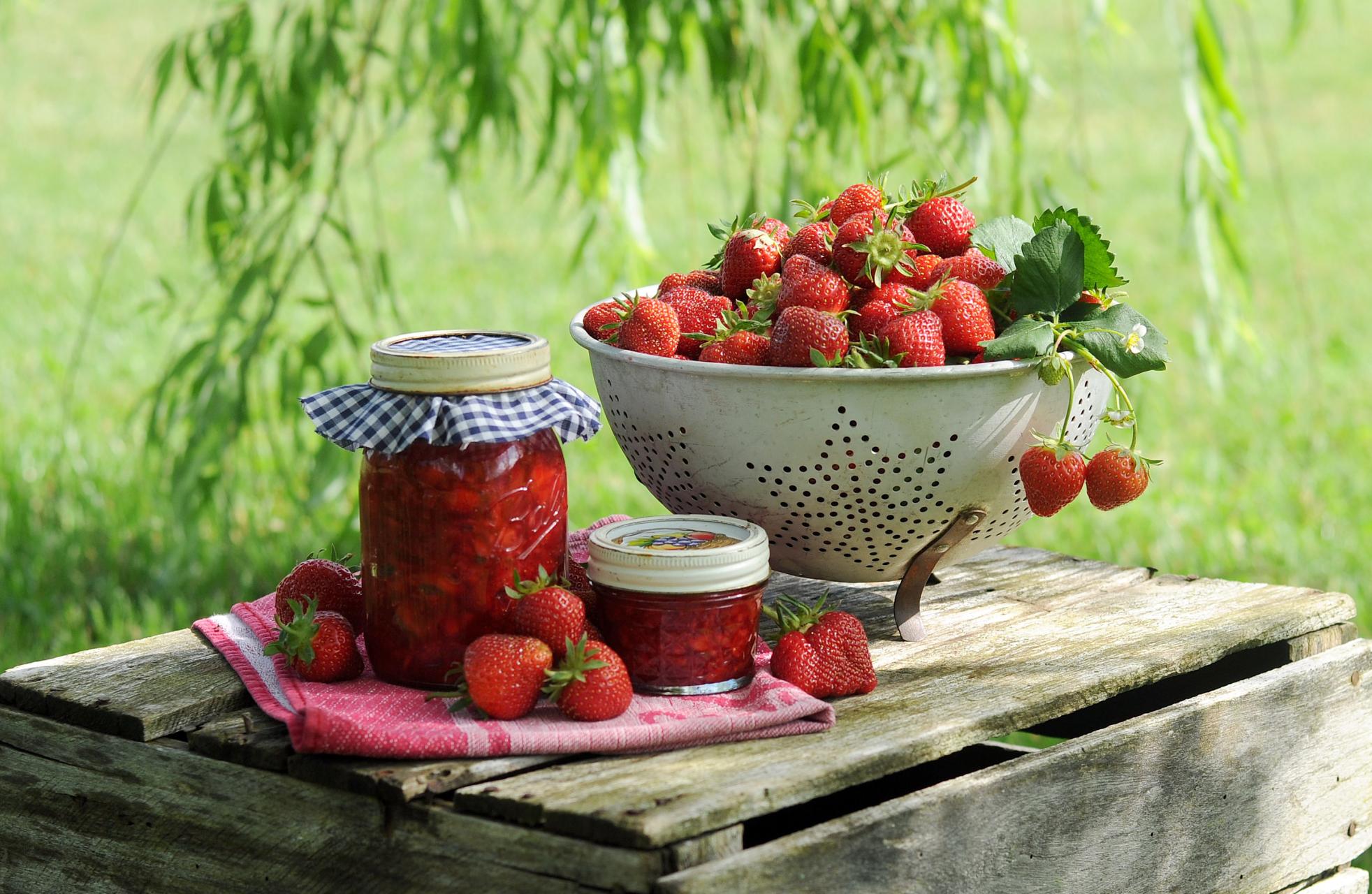
*How to grow?
1. DECIDE WHERE TO GROW YOUR STRAWBERRIES
Get them some sun on the balcony, rooftop, patio or doorstep.
And even if you live in an apartment, condo, townhouse, or small home, you can grow berries in a container on your balcony, rooftop, patio, or even doorstep. If your horizontal space is limited, consider growing strawberries in a hanging basket or stacked planter, which will allow you to take advantage of vertical growing space as the strawberry plants tumble out over the sides. By home-growing your own berries, you will also be helping the environment, since commercially grown strawberries use wasteful amounts of water, chemical fertilizers, and some of the worst pesticides imaginable, not to mention the environmental cost of shipping them for hundreds or thousands of miles.
A sunny spot outside your home is the best place to grow strawberries, though you can get a partial crop with less than a half day of direct sunlight. For shadier spots, try planting Alpine strawberries (available from vegetable seed catalogs and online nurseries), which take more patience but ultimately produce delicious fruit.
2. CHOOSE A CONTAINER FOR THEM
Give your plants enough room to grow.
Whether you choose a container made of clay, plastic, wood, or other material, make sure it has a soil depth of at least 12-14 inches to give the plants’ root systems space to grow. How many plants you can fit in will depend upon the width of the container, since you should space plants about 10-12 inches apart to allow them to spread horizontally.
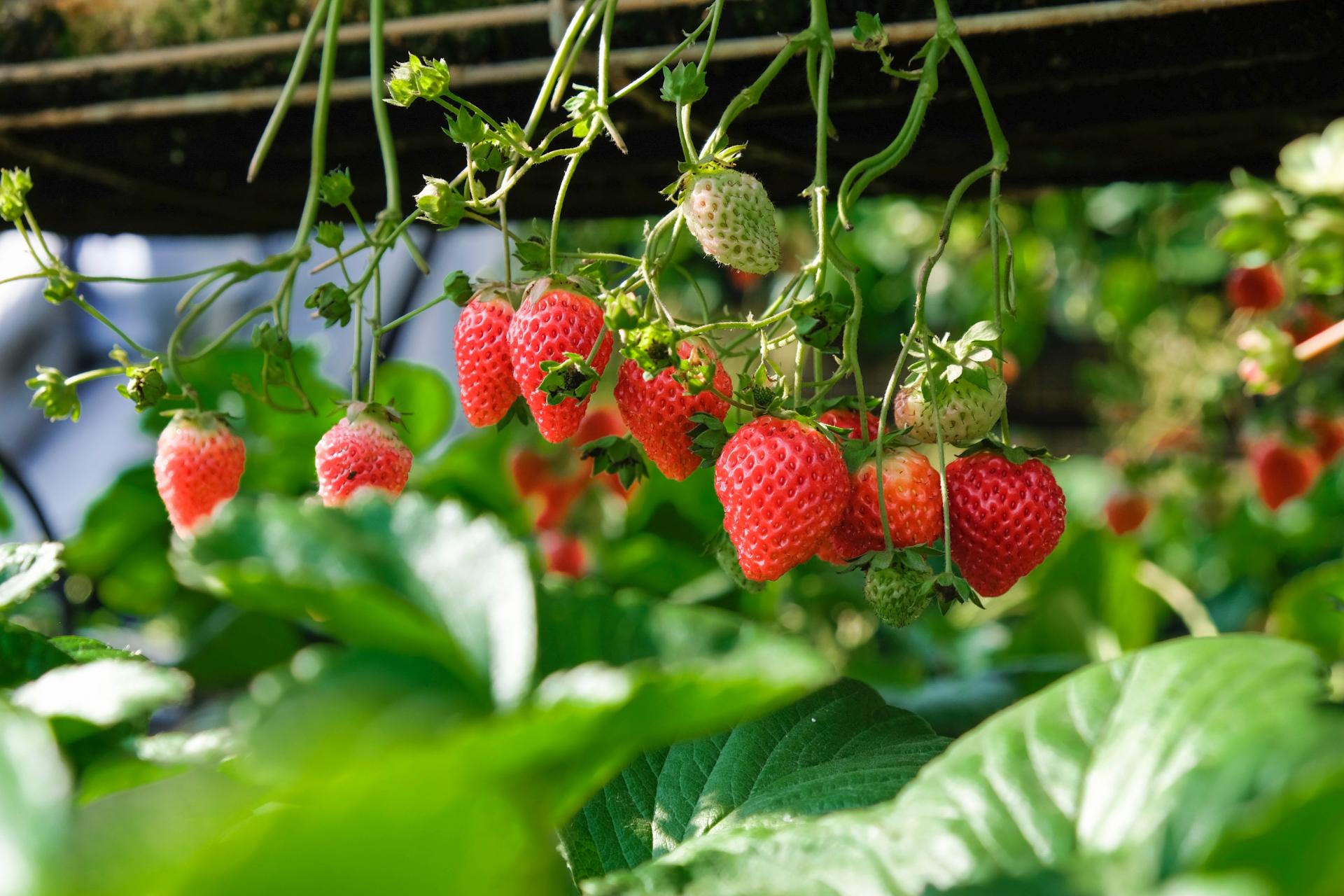
3. FILL THE CONTAINER WITH SOIL THAT MAKES STRAWBERRIES HAPPY
Strawberries like room!
Strawberries like deep, loamy soil that drains well. This means that it should contain plenty of organic matter (such as compost, shredded bark or peat moss) as well as some sand or grit. Most potting soil mixes sold at nurseries will be sufficient, and if you have access to compost, sprinkle an inch or so on top. Be sure the container has drainage holes in the bottom.
Before planting, buy a small bag of organic fertilizer from your nursery, mix it into your soil, and water this down. You can ask your nursery to recommend the right fertilizer for your soil type and region, but in general, strawberries like plenty of nitrogen plus balanced amounts of the other major nutrients. A 10-10-10 fertilizer is not excessive, especially since organic fertilizers have a slower release time.
4. GET YOUR STRAWBERRY PLANTS
Want your strawberries this year, or can you wait?
Your next step is to find some plants and put them in the soil. There are two main kinds of strawberries available: “June-bearing” plants that will bear in spring or early summer, and “Everbearing” or day-neutral varieties that can bear from early summer right up until your first frost. While June-bearing varieties can take a year to establish (you normally plant them now for next year’s harvest), everbearing plants can give you fruit the very first year and may allow you to extend your harvest over a period of weeks or months. There are many great varieties of strawberries out there and your local nursery should be able to recommend some good ones for the climate in your area. Sequoia and Chandler are the two sweetest berries I have ever tasted, while Seascape, Honeoye, Quinalt, Tristar, and Allstar have proven themselves in multiple climates.
5. CARE FOR YOUR PLANTS AND ENJOY
For optimum production, keep your strawberry plants well watered throughout the growing season. Plants should continue to be productive for at least 2-3 years, but will need to be replaced thereafter. To renovate June-bearing plants for next year, trim off their old leaves, making sure not to damage the center stalk (crown) of the plant. Everbearers do not need this trimming, but all plants should be given some top-dressed fertilizer again after fruiting. I wish you the best of success in growing your own berries!
R.J. Ruppenthal is author of FRESH FOOD FROM SMALL SPACES

The garden strawberry was first bred in Brittany, France, in the 1750s via a cross of Fragaria virginiana from eastern North America and Fragaria chiloensis, which was brought from Chile by Amédée-François Frézier in 1714. Cultivars of Fragaria × ananassa have replaced, in commercial production, the woodland strawberry (Fragaria vesca), which was the first strawberry species cultivated in the early 17th century.
The strawberry is not, from a botanical point of view, a berry. Technically, it is an aggregate accessory fruit, meaning that the fleshy part is derived not from the plant's ovaries but from the receptacle that holds the ovaries. Each apparent "seed" (achene) on the outside of the fruit is actually one of the ovaries of the flower, with a seed inside it.

*How to grow?
1. DECIDE WHERE TO GROW YOUR STRAWBERRIES
Get them some sun on the balcony, rooftop, patio or doorstep.
And even if you live in an apartment, condo, townhouse, or small home, you can grow berries in a container on your balcony, rooftop, patio, or even doorstep. If your horizontal space is limited, consider growing strawberries in a hanging basket or stacked planter, which will allow you to take advantage of vertical growing space as the strawberry plants tumble out over the sides. By home-growing your own berries, you will also be helping the environment, since commercially grown strawberries use wasteful amounts of water, chemical fertilizers, and some of the worst pesticides imaginable, not to mention the environmental cost of shipping them for hundreds or thousands of miles.
A sunny spot outside your home is the best place to grow strawberries, though you can get a partial crop with less than a half day of direct sunlight. For shadier spots, try planting Alpine strawberries (available from vegetable seed catalogs and online nurseries), which take more patience but ultimately produce delicious fruit.
2. CHOOSE A CONTAINER FOR THEM
Give your plants enough room to grow.
Whether you choose a container made of clay, plastic, wood, or other material, make sure it has a soil depth of at least 12-14 inches to give the plants’ root systems space to grow. How many plants you can fit in will depend upon the width of the container, since you should space plants about 10-12 inches apart to allow them to spread horizontally.

3. FILL THE CONTAINER WITH SOIL THAT MAKES STRAWBERRIES HAPPY
Strawberries like room!
Strawberries like deep, loamy soil that drains well. This means that it should contain plenty of organic matter (such as compost, shredded bark or peat moss) as well as some sand or grit. Most potting soil mixes sold at nurseries will be sufficient, and if you have access to compost, sprinkle an inch or so on top. Be sure the container has drainage holes in the bottom.
Before planting, buy a small bag of organic fertilizer from your nursery, mix it into your soil, and water this down. You can ask your nursery to recommend the right fertilizer for your soil type and region, but in general, strawberries like plenty of nitrogen plus balanced amounts of the other major nutrients. A 10-10-10 fertilizer is not excessive, especially since organic fertilizers have a slower release time.
4. GET YOUR STRAWBERRY PLANTS
Want your strawberries this year, or can you wait?
Your next step is to find some plants and put them in the soil. There are two main kinds of strawberries available: “June-bearing” plants that will bear in spring or early summer, and “Everbearing” or day-neutral varieties that can bear from early summer right up until your first frost. While June-bearing varieties can take a year to establish (you normally plant them now for next year’s harvest), everbearing plants can give you fruit the very first year and may allow you to extend your harvest over a period of weeks or months. There are many great varieties of strawberries out there and your local nursery should be able to recommend some good ones for the climate in your area. Sequoia and Chandler are the two sweetest berries I have ever tasted, while Seascape, Honeoye, Quinalt, Tristar, and Allstar have proven themselves in multiple climates.
5. CARE FOR YOUR PLANTS AND ENJOY
For optimum production, keep your strawberry plants well watered throughout the growing season. Plants should continue to be productive for at least 2-3 years, but will need to be replaced thereafter. To renovate June-bearing plants for next year, trim off their old leaves, making sure not to damage the center stalk (crown) of the plant. Everbearers do not need this trimming, but all plants should be given some top-dressed fertilizer again after fruiting. I wish you the best of success in growing your own berries!
R.J. Ruppenthal is author of FRESH FOOD FROM SMALL SPACES

0
0
文章
ritau
2020年03月03日

Hydrangea is a genus of 70–75 species of flowering plants native to Asia and the Americas. By far the greatest species diversity is in eastern Asia, notably Korea, China, and Japan. Most are shrubs 1 to 3 meters tall, but some are small trees, and others lianas reaching up to 30 m (98 ft) by climbing up trees. They can be either deciduous or evergreen, though the widely cultivated temperate species are all deciduous.
Having been introduced to the Azores, H. macrophylla is now very common, particularly on Faial, which is known as the "blue island" due to the vast number of hydrangeas present on the island.
‘Hydrangea’ is derived from Greek and means ‘water vessel’, which is in reference to the shape of its seed capsules. The earlier name, Hortensia, is a Latinised version of the French given name Hortense, referring to the wife of Jean-André Lepaute.

*In culture*
In Japan, ama-cha,甘茶 meaning sweet tea, is another herbal tea made from Hydrangea serrata, whose leaves contain a substance that develops a sweet taste (phyllodulcin). For the fullest taste, fresh leaves are crumpled, steamed, and dried, yielding dark brown tea leaves. Ama-cha is mainly used for kan-butsu-e (the Buddha bathing ceremony) on April 8 every year—the day thought to be Buddha's birthday in Japan. During the ceremony, Ama-cha is poured over a statue of Buddha and served to people in attendance. A legend has it that on the day Buddha was born, nine dragons poured Amrita over him; ama-cha is substituted for Amrita in Japan.
In Korean tea, Hydrangea serrata (hangul:산수국 hanja:山水菊) is used for an herbal tea called sugukcha (수국차) or ilsulcha (이슬차).
The pink hydrangea has risen in popularity all over the world, but especially in Asia. Pink hydrangeas have many different meanings, but generally mean, "You are the beat of my heart," as described by the celebrated Asian florist Tan Jun Yong, where he was quoted saying, "The light delicate blush of the petals reminds me of a beating heart, while the size could only match the heart of the sender!"
Hydrangea quercifolia was declared the official state wildflower of Alabama in 1999.
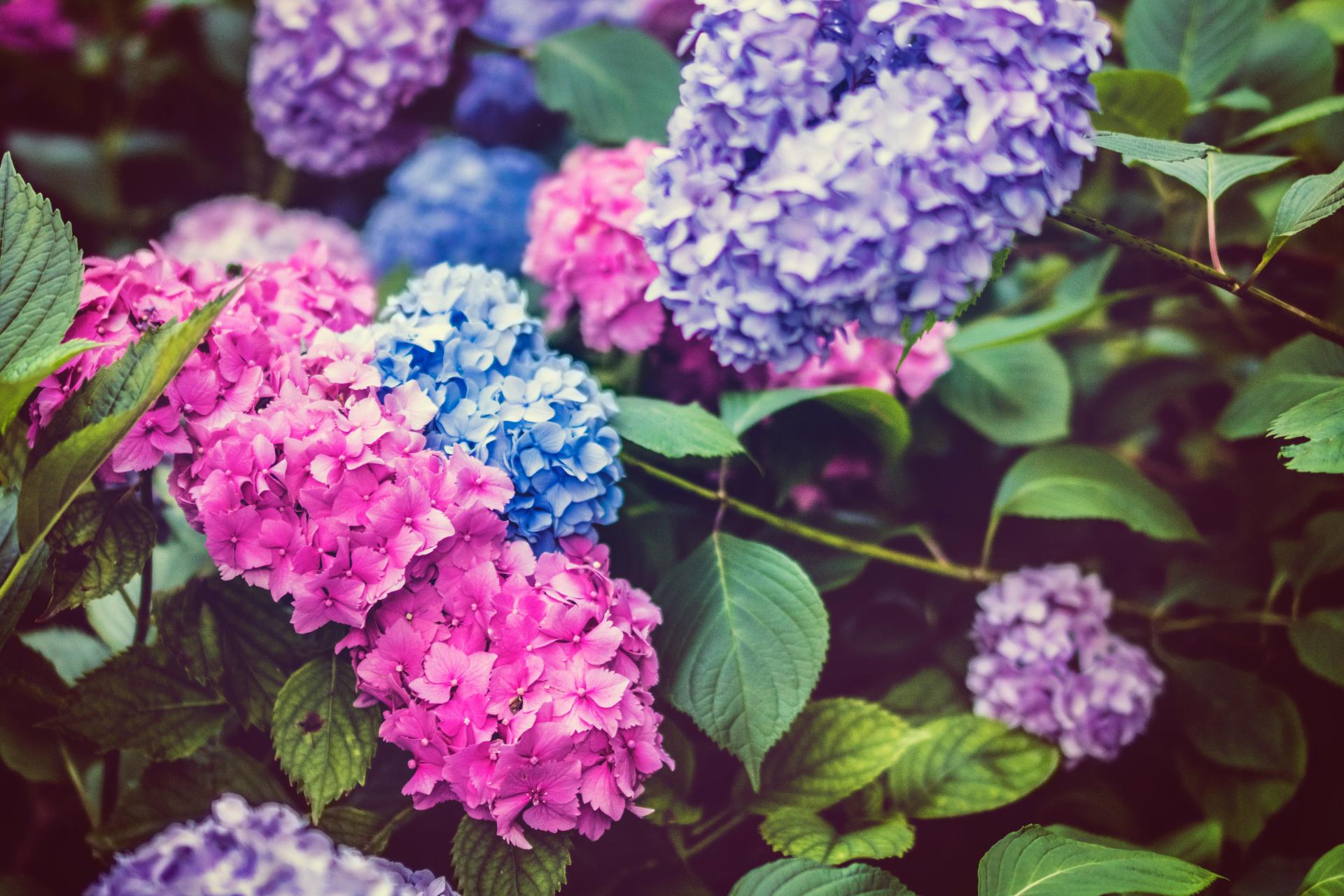
*Colours and soil acidity*
In most species the flowers are white, but in some species (notably H. macrophylla), can be blue, red, pink, light purple, or dark purple. In these species the color is affected by the presence of aluminium ions which are available or tied up depending upon the soil pH. For H. macrophylla and H. serrata cultivars, the flower color can be determined by the relative acidity of the soil: an acidic soil (pH below 7), will have available aluminum ions and typically produce flowers that are blue to purple, whereas an alkaline soil (pH above 7) will tie up aluminum ions and result in pink or red flowers. This is caused by a color change of the flower pigments in the presence of aluminium ions which can be taken up into hyperaccumulating plants. Lowering the pH of potting soils or mixes usually does not change the flower color to blue, because these soils have no aluminum ions. The ability to blue or pink a hydrangea is also influenced by the cultivar. Some plants are selected for their ability to be blued, while others are bred and selected to be red, pink or white. The flower color of most other Hydrangea species is not affected by aluminum and cannot be changed or shifted. Hydrangeas also have a nickname called 'Change Rose'.
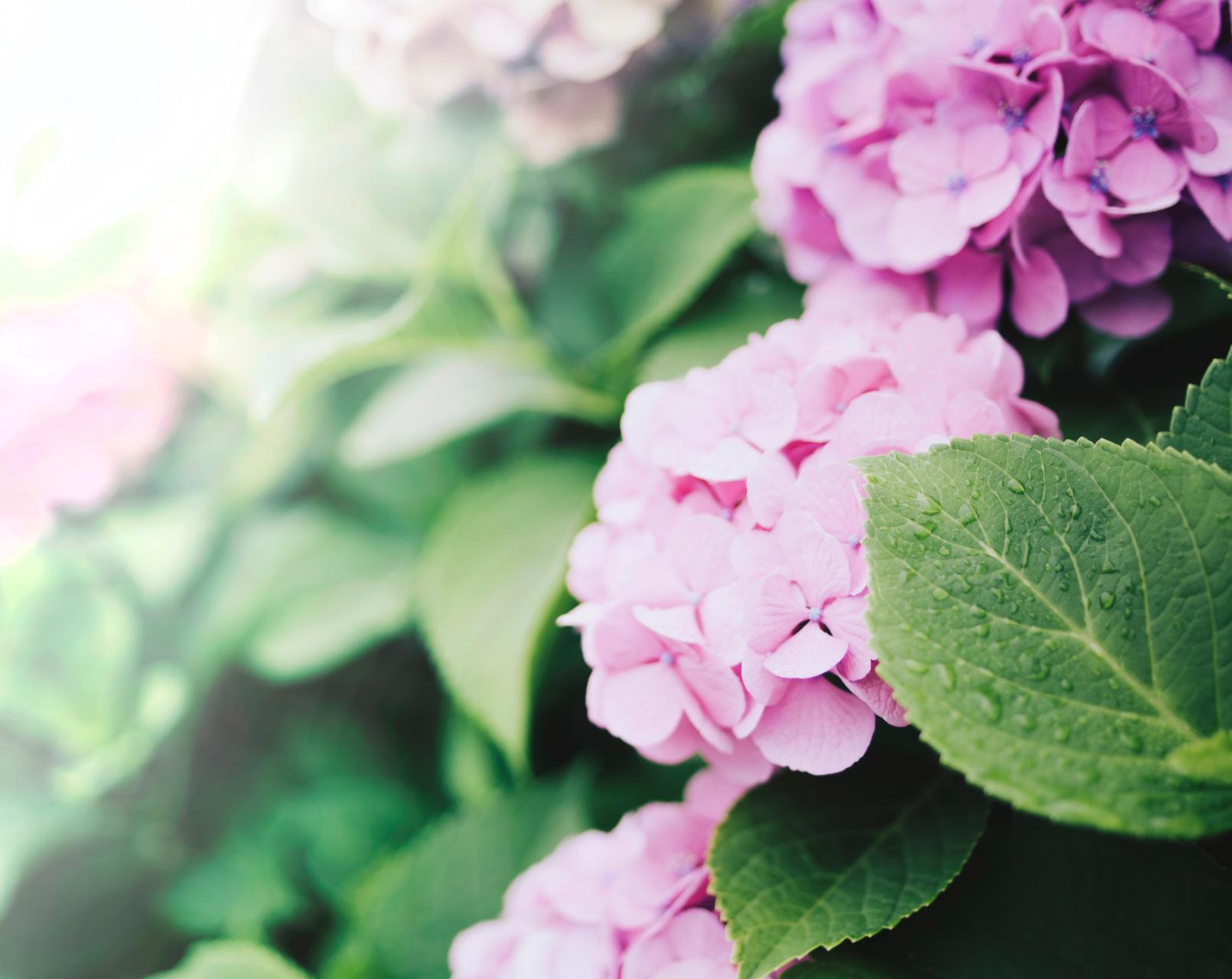
Having been introduced to the Azores, H. macrophylla is now very common, particularly on Faial, which is known as the "blue island" due to the vast number of hydrangeas present on the island.
‘Hydrangea’ is derived from Greek and means ‘water vessel’, which is in reference to the shape of its seed capsules. The earlier name, Hortensia, is a Latinised version of the French given name Hortense, referring to the wife of Jean-André Lepaute.

*In culture*
In Japan, ama-cha,甘茶 meaning sweet tea, is another herbal tea made from Hydrangea serrata, whose leaves contain a substance that develops a sweet taste (phyllodulcin). For the fullest taste, fresh leaves are crumpled, steamed, and dried, yielding dark brown tea leaves. Ama-cha is mainly used for kan-butsu-e (the Buddha bathing ceremony) on April 8 every year—the day thought to be Buddha's birthday in Japan. During the ceremony, Ama-cha is poured over a statue of Buddha and served to people in attendance. A legend has it that on the day Buddha was born, nine dragons poured Amrita over him; ama-cha is substituted for Amrita in Japan.
In Korean tea, Hydrangea serrata (hangul:산수국 hanja:山水菊) is used for an herbal tea called sugukcha (수국차) or ilsulcha (이슬차).
The pink hydrangea has risen in popularity all over the world, but especially in Asia. Pink hydrangeas have many different meanings, but generally mean, "You are the beat of my heart," as described by the celebrated Asian florist Tan Jun Yong, where he was quoted saying, "The light delicate blush of the petals reminds me of a beating heart, while the size could only match the heart of the sender!"
Hydrangea quercifolia was declared the official state wildflower of Alabama in 1999.

*Colours and soil acidity*
In most species the flowers are white, but in some species (notably H. macrophylla), can be blue, red, pink, light purple, or dark purple. In these species the color is affected by the presence of aluminium ions which are available or tied up depending upon the soil pH. For H. macrophylla and H. serrata cultivars, the flower color can be determined by the relative acidity of the soil: an acidic soil (pH below 7), will have available aluminum ions and typically produce flowers that are blue to purple, whereas an alkaline soil (pH above 7) will tie up aluminum ions and result in pink or red flowers. This is caused by a color change of the flower pigments in the presence of aluminium ions which can be taken up into hyperaccumulating plants. Lowering the pH of potting soils or mixes usually does not change the flower color to blue, because these soils have no aluminum ions. The ability to blue or pink a hydrangea is also influenced by the cultivar. Some plants are selected for their ability to be blued, while others are bred and selected to be red, pink or white. The flower color of most other Hydrangea species is not affected by aluminum and cannot be changed or shifted. Hydrangeas also have a nickname called 'Change Rose'.

0
0
文章
ritau
2020年02月28日

Dianthus caryophyllus, commonly known as the carnation or clove pink, is a species of Dianthus. It is probably native to the Mediterranean region but its exact range is unknown due to extensive cultivation for the last 2,000 years.

For the most part, carnations express love, fascination, and distinction, though there are many variations dependent on color.
Traditional meanings:
*Along with the red rose, the red carnation can be used as a symbol of socialism and the labour movement, and historically has often been used in demonstrations on International Workers' Day (May Day).
*In China, the carnation flower is the most frequently used flower in weddings.
*In Portugal, bright red carnations were used when in 1974 the authoritarian Estado Novo regime was overthrown; therefore, this transition (brought about by a combination of a coup d'état with civil resistance) is known as the Carnation Revolution.
*Light red carnations represent admiration, while dark red denote deep love and affection.

*White carnations represent pure love and good luck, while striped (variegated) carnations symbolise regret that a love cannot be shared.
*White carnations, in the Netherlands are associated with Prince Bernhard. He wore one during World War II and in a gesture of defiance some of the *Dutch population took up this gesture. After the war the white carnation became a sign of the Prince, veterans and remembrance of the resistance.
*Purple carnations indicate capriciousness. In France, it is a traditional funeral flower, given in condolence for the death of a loved one.
*According to a Christian legend, carnations first appeared on Earth as Jesus carried the Cross. The Virgin Mary shed tears at Jesus' plight, and carnations sprang up from where her tears fell. Thus the pink carnation became the symbol of a mother's undying love.
*Carnation is the birth flower for those born in the month of January.
*Since Ottoman times, red carnations and tulips are used in the interior wall paintings of mosques in Turkey. It is often said that while tulips represent God, carnations is the symbol for Muhammad. However these flower designs are not unique to mosques but also used in many other Ottoman traditional art forms.
*The formal name for carnation, dianthus, comes from Greek for "heavenly flower",or the flower of Jove.


For the most part, carnations express love, fascination, and distinction, though there are many variations dependent on color.
Traditional meanings:
*Along with the red rose, the red carnation can be used as a symbol of socialism and the labour movement, and historically has often been used in demonstrations on International Workers' Day (May Day).
*In China, the carnation flower is the most frequently used flower in weddings.
*In Portugal, bright red carnations were used when in 1974 the authoritarian Estado Novo regime was overthrown; therefore, this transition (brought about by a combination of a coup d'état with civil resistance) is known as the Carnation Revolution.
*Light red carnations represent admiration, while dark red denote deep love and affection.

*White carnations represent pure love and good luck, while striped (variegated) carnations symbolise regret that a love cannot be shared.
*White carnations, in the Netherlands are associated with Prince Bernhard. He wore one during World War II and in a gesture of defiance some of the *Dutch population took up this gesture. After the war the white carnation became a sign of the Prince, veterans and remembrance of the resistance.
*Purple carnations indicate capriciousness. In France, it is a traditional funeral flower, given in condolence for the death of a loved one.
*According to a Christian legend, carnations first appeared on Earth as Jesus carried the Cross. The Virgin Mary shed tears at Jesus' plight, and carnations sprang up from where her tears fell. Thus the pink carnation became the symbol of a mother's undying love.
*Carnation is the birth flower for those born in the month of January.
*Since Ottoman times, red carnations and tulips are used in the interior wall paintings of mosques in Turkey. It is often said that while tulips represent God, carnations is the symbol for Muhammad. However these flower designs are not unique to mosques but also used in many other Ottoman traditional art forms.
*The formal name for carnation, dianthus, comes from Greek for "heavenly flower",or the flower of Jove.

0
0
文章
ritau
2020年02月19日

Many related plants also share the name "daisy", so to distinguish this species from other daisies it is sometimes qualified as common daisy, lawn daisy or English daisy. Historically, it has also been commonly known as bruisewort and occasionally woundwort (although the common name woundwort is now more closely associated with Stachys). Bellis perennis is native to western, central and northern Europe, but widely naturalised in most temperate regions including the Americas and Australasia.

It is a perennial herbaceous plant with short creeping rhizomes and rosettes of small rounded or spoon-shaped leaves that are from 3/4 to 2 inches (approx. 2-5 cm) long and grow flat to the ground. The species habitually colonises lawns, and is difficult to eradicate by mowing – hence the term 'lawn daisy'. Wherever it appears it is often considered an invasive weed.
The flowerheads are composite, in the form of a pseudanthium, consisting of many sessile flowers about 3/4 to 1-1/4 in (approx. 2-3 cm) in diameter, with white ray florets (often tipped red) and yellow disc florets. Each inflorescence is borne on single leafless stems 3/4 – 4 in (approx. 2-10 cm), rarely 6 in (approx. 15 cm) tall. The capitulum, or disc of florets, is surrounded by two rows of green bracts known as "phyllaries". The achenes are without pappus.
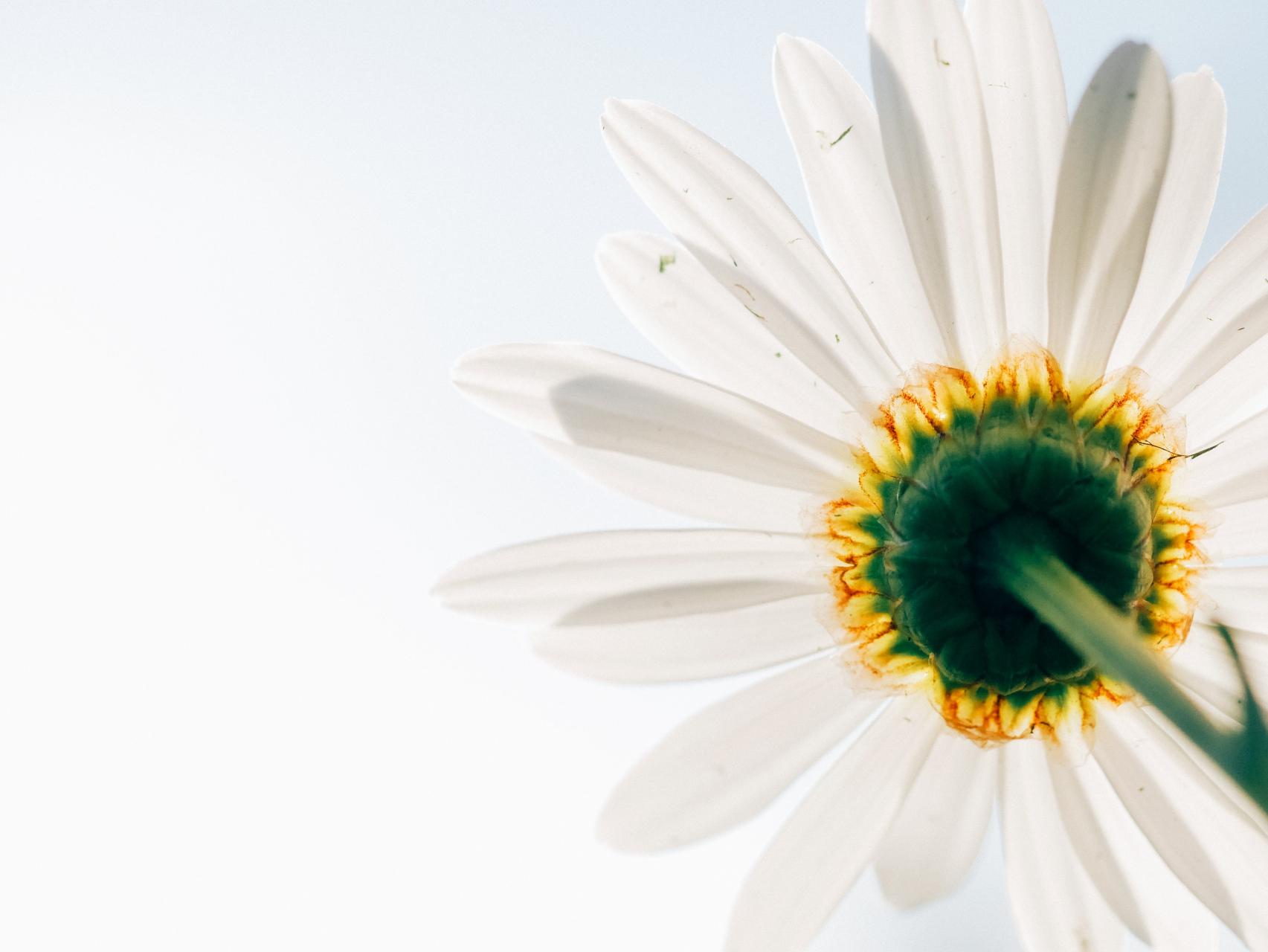
Bellis perennis generally blooms from early to midsummer, although when grown under ideal conditions, it has a very long flowering season and will even produce a few flowers in the middle of mild winters.
It can generally be grown in USDA Zones 4 – 8 (i.e. where minimum temperatures are above −30 °F (−34 °C)) in full sun to partial shade conditions, and requires low or no maintenance. It has no known serious insect or disease problems and can generally be grown in most well-drained soils. The plant may be propagated either by seed after the last frost, or by division after flowering.
Though invasive, the species is still considered a valuable ground cover in certain garden settings (e.g., as part of English or cottage inspired gardens, as well as spring meadows where low growth and some color is desired in parallel with minimal care and maintenance while helping to crowd out noxious weeds once established and naturalised).
Numerous single- and double-flowered varieties are in cultivation, producing flat or spherical blooms in a range of sizes (1 cm to 6 cm) and colours (red, pink & white). They are generally grown from seed as biennial bedding plants. They can also be purchased as plugs in Spring. The cultivar 'Tasso series' has gained the Royal Horticultural Society's Award of Garden Merit.
It has been reported to be mostly self-fertilizing, but some plants may be self-sterile.
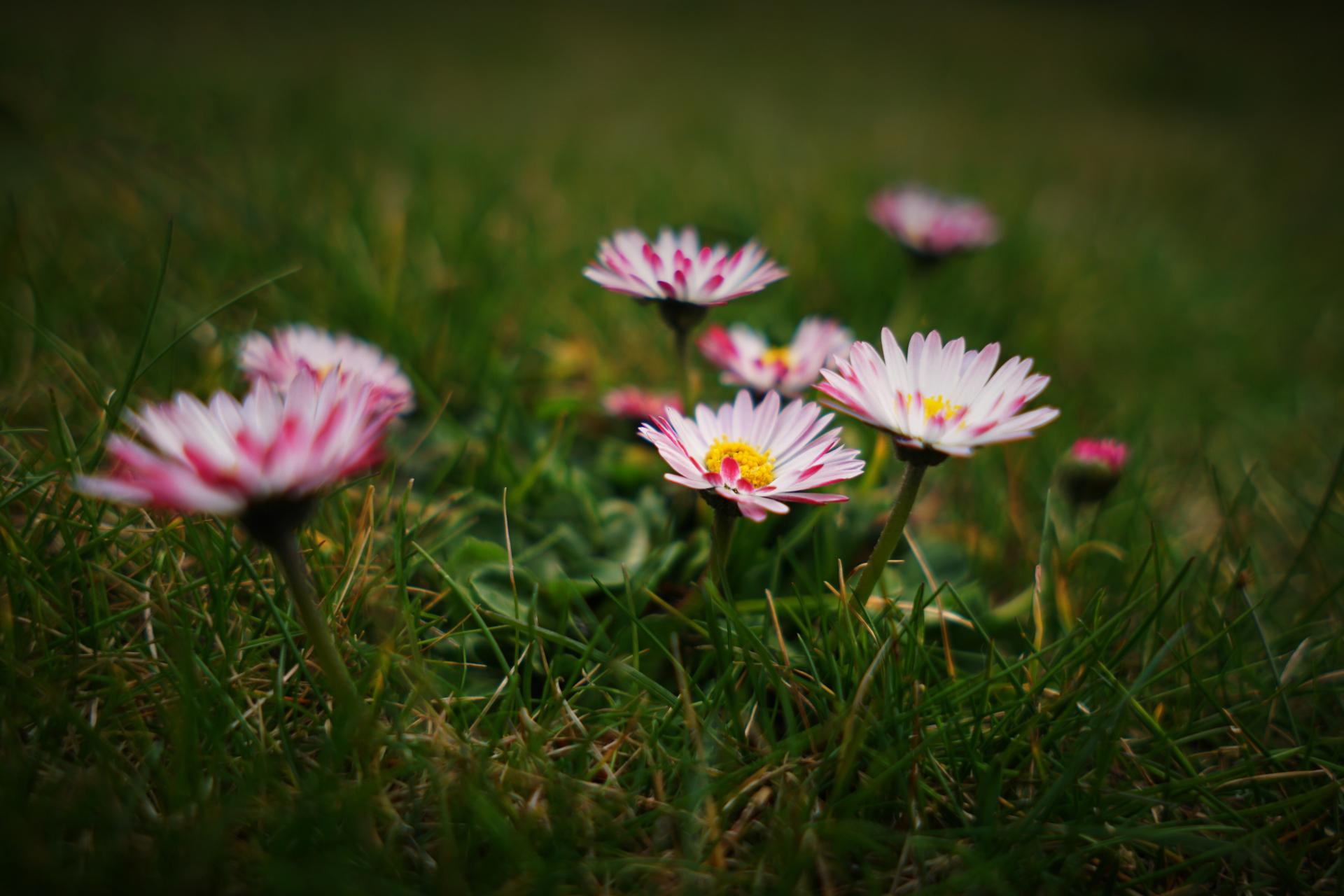

It is a perennial herbaceous plant with short creeping rhizomes and rosettes of small rounded or spoon-shaped leaves that are from 3/4 to 2 inches (approx. 2-5 cm) long and grow flat to the ground. The species habitually colonises lawns, and is difficult to eradicate by mowing – hence the term 'lawn daisy'. Wherever it appears it is often considered an invasive weed.
The flowerheads are composite, in the form of a pseudanthium, consisting of many sessile flowers about 3/4 to 1-1/4 in (approx. 2-3 cm) in diameter, with white ray florets (often tipped red) and yellow disc florets. Each inflorescence is borne on single leafless stems 3/4 – 4 in (approx. 2-10 cm), rarely 6 in (approx. 15 cm) tall. The capitulum, or disc of florets, is surrounded by two rows of green bracts known as "phyllaries". The achenes are without pappus.

Bellis perennis generally blooms from early to midsummer, although when grown under ideal conditions, it has a very long flowering season and will even produce a few flowers in the middle of mild winters.
It can generally be grown in USDA Zones 4 – 8 (i.e. where minimum temperatures are above −30 °F (−34 °C)) in full sun to partial shade conditions, and requires low or no maintenance. It has no known serious insect or disease problems and can generally be grown in most well-drained soils. The plant may be propagated either by seed after the last frost, or by division after flowering.
Though invasive, the species is still considered a valuable ground cover in certain garden settings (e.g., as part of English or cottage inspired gardens, as well as spring meadows where low growth and some color is desired in parallel with minimal care and maintenance while helping to crowd out noxious weeds once established and naturalised).
Numerous single- and double-flowered varieties are in cultivation, producing flat or spherical blooms in a range of sizes (1 cm to 6 cm) and colours (red, pink & white). They are generally grown from seed as biennial bedding plants. They can also be purchased as plugs in Spring. The cultivar 'Tasso series' has gained the Royal Horticultural Society's Award of Garden Merit.
It has been reported to be mostly self-fertilizing, but some plants may be self-sterile.

0
0
文章
ritau
2020年02月13日

A cherry blossom is a flower of many trees of genus Prunus. The most well-known species is the Japanese cherry, Prunus serrulata, which is commonly called sakura (桜 or 櫻; さくら).
They are widely distributed, especially in the temperate zone of the Northern Hemisphere including Japan, Taiwan, Korea, Mainland China, Nepal, India, Pakistan, Afghanistan, Iran, Myanmar, Thailand and West Siberia.Along with the chrysanthemum, the cherry blossom is considered the national flower of Japan.
All varieties of cherry blossom trees produce small, unpalatable fruit or edible cherries. Edible cherries generally come from cultivars of the related species Prunus avium and Prunus cerasus.

In Japan, cherry blossoms symbolize clouds due to their nature of blooming en masse, besides being an enduring metaphor for the ephemeral nature of life, an aspect of Japanese cultural tradition that is often associated with Buddhist influence, and which is embodied in the concept of mono no aware.The association of the cherry blossom with mono no aware dates back to 18th-century scholar Motoori Norinaga. The transience of the blossoms, the exquisite beauty and volatility, has often been associated with mortality and graceful and readily acceptance of destiny and karma; for this reason, cherry blossoms are richly symbolic, and have been utilized often in Japanese art, manga, anime, and film, as well as at musical performances for ambient effect. There is at least one popular folk song, originally meant for the shakuhachi (bamboo flute), titled "Sakura", and several pop songs. The flower is also represented on all manner of consumer goods in Japan, including kimono, stationery, and dishware.

The most popular variety of cherry blossom in Japan is the Somei Yoshino. Its flowers are nearly pure white, tinged with the palest pink, especially near the stem. They bloom and usually fall within a week, before the leaves come out. Therefore, the trees look nearly white from top to bottom. The variety takes its name from the village of Somei (now part of Toshima in Tokyo). It was developed in the mid- to late-19th century at the end of the Edo period and the beginning of the Meiji period. The Somei Yoshino is so widely associated with cherry blossoms that jidaigeki and other works of fiction often depict the variety in the Edo period or earlier; such depictions are anachronisms.
Winter sakura or fuyuzakura (Prunus subhirtella autumnalis) begins to bloom in the fall and continues blooming sporadically throughout the winter. It is said to be a cross between edohiganzakura, the Tokyo Higan cherry (P. incisa) and mamezakura (P. pendula).
Other categories include yamazakura, yaezakura, and shidarezakura. The yaezakura have large flowers, thick with rich pink petals. The shidarezakura, or weeping cherry, has branches that fall like those of a weeping willow, bearing cascades of pink flowers.

They are widely distributed, especially in the temperate zone of the Northern Hemisphere including Japan, Taiwan, Korea, Mainland China, Nepal, India, Pakistan, Afghanistan, Iran, Myanmar, Thailand and West Siberia.Along with the chrysanthemum, the cherry blossom is considered the national flower of Japan.
All varieties of cherry blossom trees produce small, unpalatable fruit or edible cherries. Edible cherries generally come from cultivars of the related species Prunus avium and Prunus cerasus.

In Japan, cherry blossoms symbolize clouds due to their nature of blooming en masse, besides being an enduring metaphor for the ephemeral nature of life, an aspect of Japanese cultural tradition that is often associated with Buddhist influence, and which is embodied in the concept of mono no aware.The association of the cherry blossom with mono no aware dates back to 18th-century scholar Motoori Norinaga. The transience of the blossoms, the exquisite beauty and volatility, has often been associated with mortality and graceful and readily acceptance of destiny and karma; for this reason, cherry blossoms are richly symbolic, and have been utilized often in Japanese art, manga, anime, and film, as well as at musical performances for ambient effect. There is at least one popular folk song, originally meant for the shakuhachi (bamboo flute), titled "Sakura", and several pop songs. The flower is also represented on all manner of consumer goods in Japan, including kimono, stationery, and dishware.

The most popular variety of cherry blossom in Japan is the Somei Yoshino. Its flowers are nearly pure white, tinged with the palest pink, especially near the stem. They bloom and usually fall within a week, before the leaves come out. Therefore, the trees look nearly white from top to bottom. The variety takes its name from the village of Somei (now part of Toshima in Tokyo). It was developed in the mid- to late-19th century at the end of the Edo period and the beginning of the Meiji period. The Somei Yoshino is so widely associated with cherry blossoms that jidaigeki and other works of fiction often depict the variety in the Edo period or earlier; such depictions are anachronisms.
Winter sakura or fuyuzakura (Prunus subhirtella autumnalis) begins to bloom in the fall and continues blooming sporadically throughout the winter. It is said to be a cross between edohiganzakura, the Tokyo Higan cherry (P. incisa) and mamezakura (P. pendula).
Other categories include yamazakura, yaezakura, and shidarezakura. The yaezakura have large flowers, thick with rich pink petals. The shidarezakura, or weeping cherry, has branches that fall like those of a weeping willow, bearing cascades of pink flowers.

0
0
文章
ritau
2020年01月30日

Hello everybody, welcome back to our channel! Today we are going to teach you how to grow delicious grapes at home. Here are 7 steps to go:
1. Plant your grapevines.
Depending on the species of grapes you are planting, spacing will be different for each plant. For American and European grapes, plant each vine 6–10 feet (1.8–3.0 m) apart. Muscadines require much more space, and should be planted approximately 16 feet (4.9 m) apart. Plant the cuttings in a trench with the basal and center bud covered. The top bud should be just above the soil surface. Press the soil firmly around the newly planted grapevine cuttings.
2. Give your plants a good watering.
Grapevines don’t prefer heavy water or rain, so after the first watering keep the amount of water you give them to a minimum. Keep water near the roots so that the majority of it gets absorbed rather than evaporated by the sun. If your area doesn’t get much rain, set up a drip system directly at the roots so that the grapevines get small amounts of water on a regular basis.

3. Prune your grapevines.
The first year, the grapevine should not be allowed to produce any fully matured fruits as these can damage the young vine with their weight. Cut back all the fruit, as well as all the vines except for the strongest that branch off the cane. In later years prune as needed following established local practices, and prune back 90% of the new growth on older vines each year.
4. Prune vines when dormant.
Always always prune grapevines when they are dormant. They will otherwise bleed their sap - losing vigour. This is typically in late winter when it is no longer cold enough to frost outside.

5. Mulch around the vines.
A layer of mulch around your plants will regulate soil temperature, retain water, and reduce weeds.
6. Apply pest control as needed.
Little pest control is needed as grapevines are naturally hardy. Keep weeds at bay by hand-weeding on a regular basis, and cover you grapevines in bird net to keep birds away if necessary. Seek guidance from your local gardening club or agricultural extension on how to combat the Vine Moth. It is one of the few pests that can decimate grapevines.
7. Harvest your grapes when appropriate. Strong, edible fruit likely won’t appear for anywhere from 1-3 years. When it appears, test its ripeness by picking a few grapes from different areas and tasting them. If the grapes are sweet, start picking as they ready for harvesting and eating.
source:wikihow

Hope you can enjoy a fine harvest!
1. Plant your grapevines.
Depending on the species of grapes you are planting, spacing will be different for each plant. For American and European grapes, plant each vine 6–10 feet (1.8–3.0 m) apart. Muscadines require much more space, and should be planted approximately 16 feet (4.9 m) apart. Plant the cuttings in a trench with the basal and center bud covered. The top bud should be just above the soil surface. Press the soil firmly around the newly planted grapevine cuttings.
2. Give your plants a good watering.
Grapevines don’t prefer heavy water or rain, so after the first watering keep the amount of water you give them to a minimum. Keep water near the roots so that the majority of it gets absorbed rather than evaporated by the sun. If your area doesn’t get much rain, set up a drip system directly at the roots so that the grapevines get small amounts of water on a regular basis.

3. Prune your grapevines.
The first year, the grapevine should not be allowed to produce any fully matured fruits as these can damage the young vine with their weight. Cut back all the fruit, as well as all the vines except for the strongest that branch off the cane. In later years prune as needed following established local practices, and prune back 90% of the new growth on older vines each year.
4. Prune vines when dormant.
Always always prune grapevines when they are dormant. They will otherwise bleed their sap - losing vigour. This is typically in late winter when it is no longer cold enough to frost outside.

5. Mulch around the vines.
A layer of mulch around your plants will regulate soil temperature, retain water, and reduce weeds.
6. Apply pest control as needed.
Little pest control is needed as grapevines are naturally hardy. Keep weeds at bay by hand-weeding on a regular basis, and cover you grapevines in bird net to keep birds away if necessary. Seek guidance from your local gardening club or agricultural extension on how to combat the Vine Moth. It is one of the few pests that can decimate grapevines.
7. Harvest your grapes when appropriate. Strong, edible fruit likely won’t appear for anywhere from 1-3 years. When it appears, test its ripeness by picking a few grapes from different areas and tasting them. If the grapes are sweet, start picking as they ready for harvesting and eating.
source:wikihow

Hope you can enjoy a fine harvest!
0
0




